All photos © Alan Burger except where noted.
This documents my trip from Ketchikan, Alaska down the British Columbia coast to Bellingham, Washington in the “Sea Wolf“. This was a follow-up to my spring voyage in April 2022 up the BC coast and doing a naturalist gig in southeast Alaska with Sea Wolf Adventures https://seawolfadventures.net/
You can see photos of that voyage here: Spring 2022 on Sea Wolf
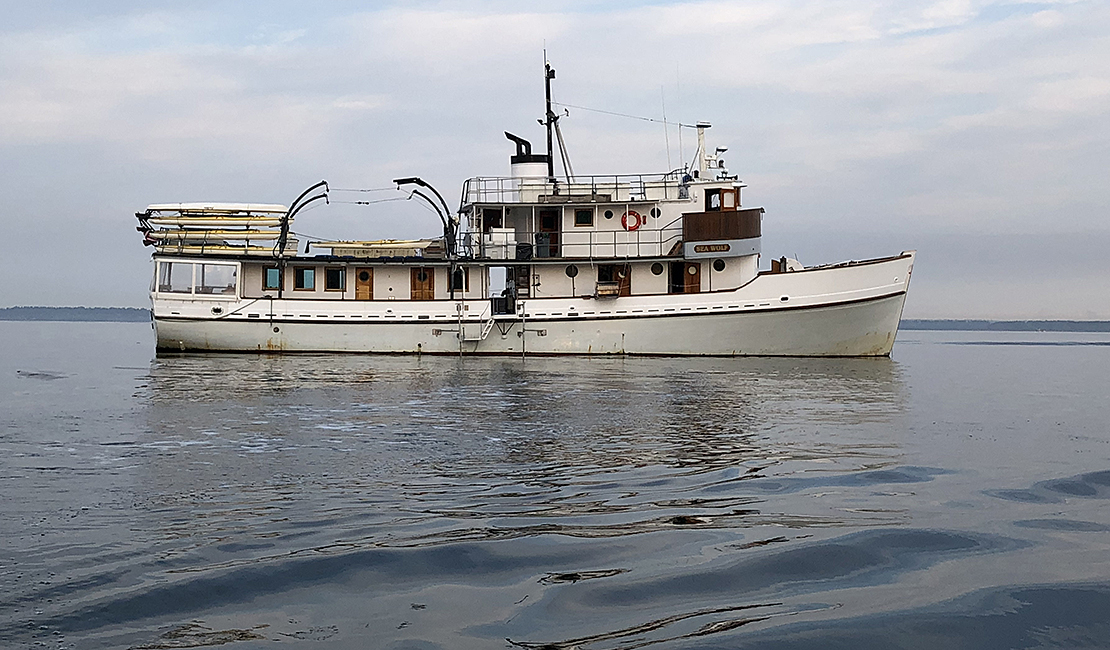
The Sea Wolf
The Sea Wolf is a wooden-hulled ship 100 ft long. She was built as a minesweeper during World War II and served in San Francisco harbour as the U.S.S. Observer. Here she is as a navy vessel in the 1940s.
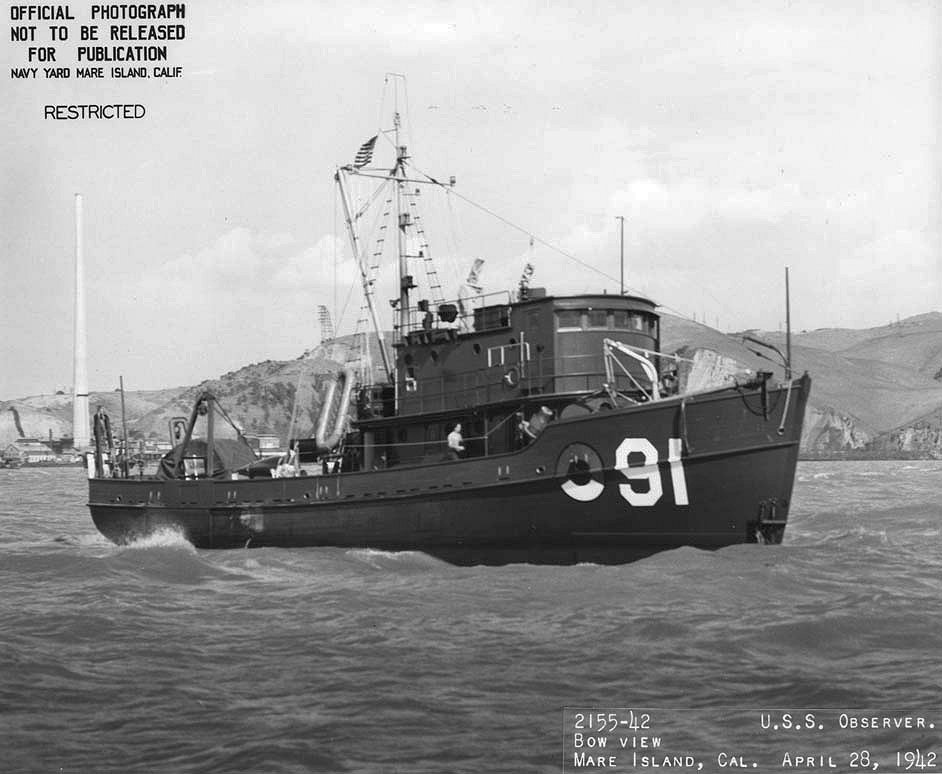
The U.S.S. Observer – minesweeper in San Francisco Harbour 1942. Photo: Wikipedia
This old lady celebrated her 80th birthday this year. She still has the original diesel locomotive engine. In her current life with owner Kimber Owen she does eco-tourism adventure trips, mainly in southeast Alaska.
I flew to Ketchikan to join the vessel. For the transit to Bellingham there were just 6 of us on board – skipper Keith, engineer Joe, deck-hand/naturalist Emma and three of us as passengers/cooks/washer-uppers: Tim, Heidi and me. Ketchikan is an interesting town built along a narrow strip between steep mountains and the sea, with a long history as one of Alaska’s first towns.
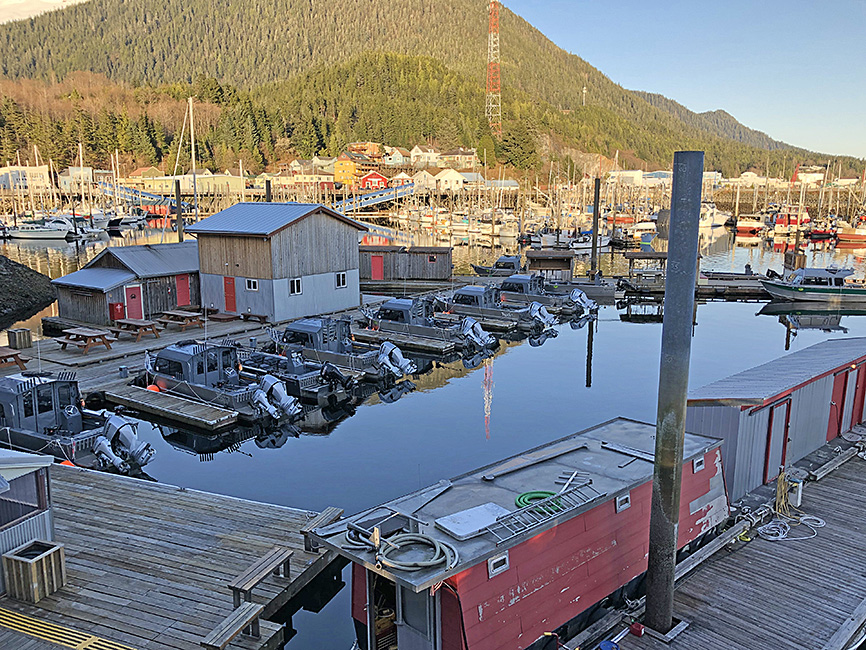
Part of Ketchikan harbour.
Unfortunately in summer Ketchikan is a popular stopping place for huge cruise ships – the town was jammed with several thousand tourists and we were happy to scoot away southward into peaceful wilderness.
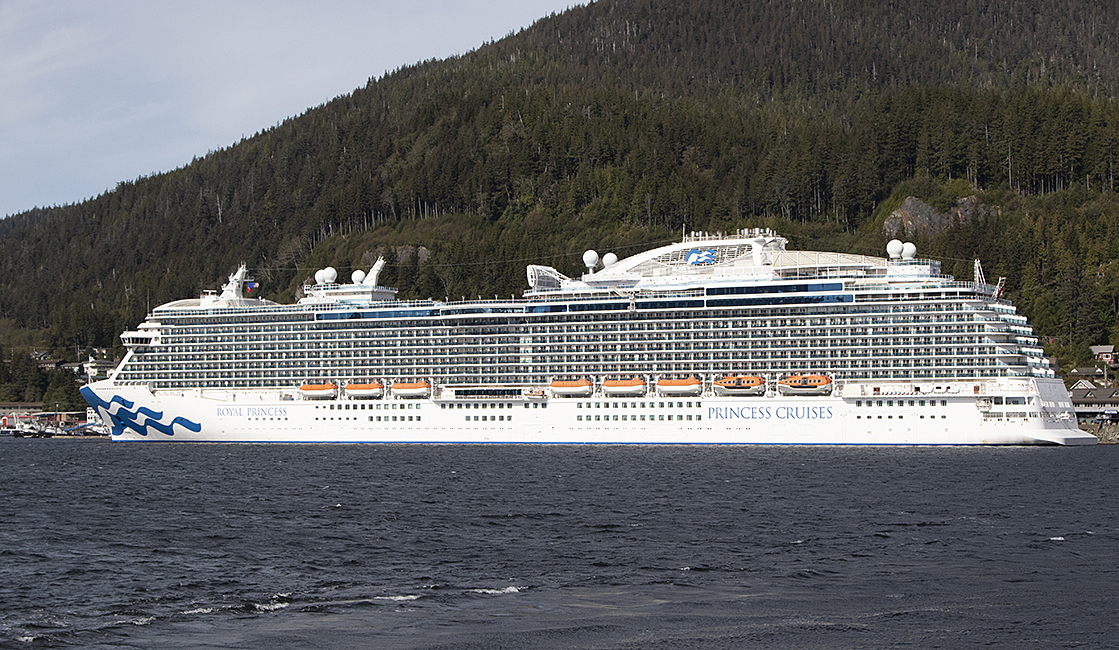
One of three monster cruise ships that were in Ketchikan port the day we departed.
Our first night was spent at anchor near the Alaska-BC border in a lovely cove among the Duke Islands. The next morning we were on our way at sunrise for a beautiful clear day.

Heidi and Alan on the bow at sunrise, crossing Dixon Entrance into B.C. waters, 20 September 2022. Photo: Tim
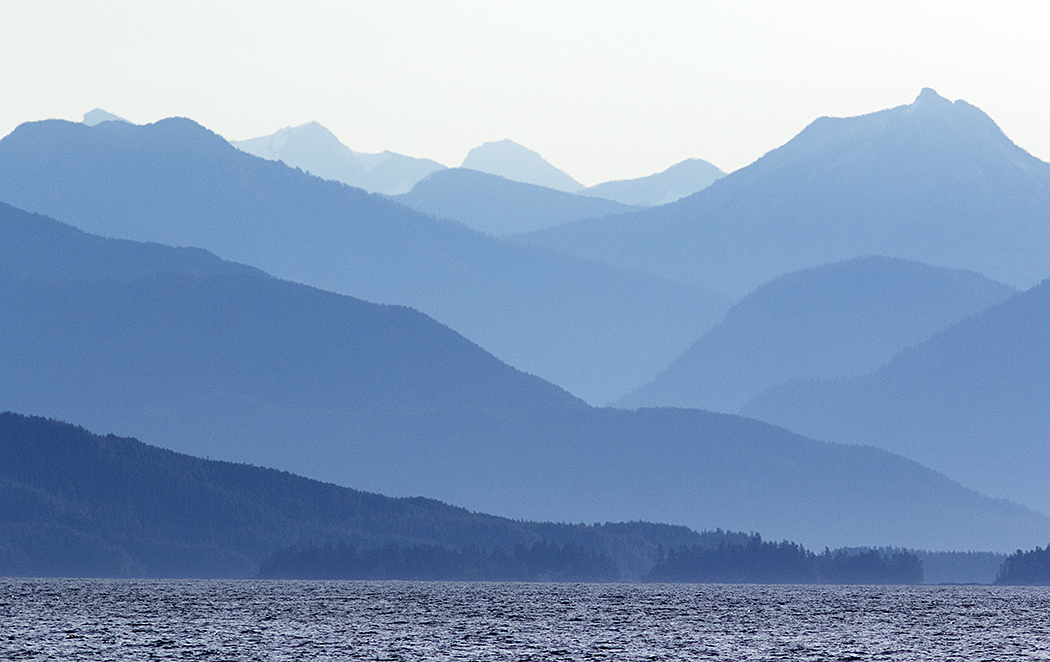
Mountains at Dixon Entrance on the Alaska/B.C. border
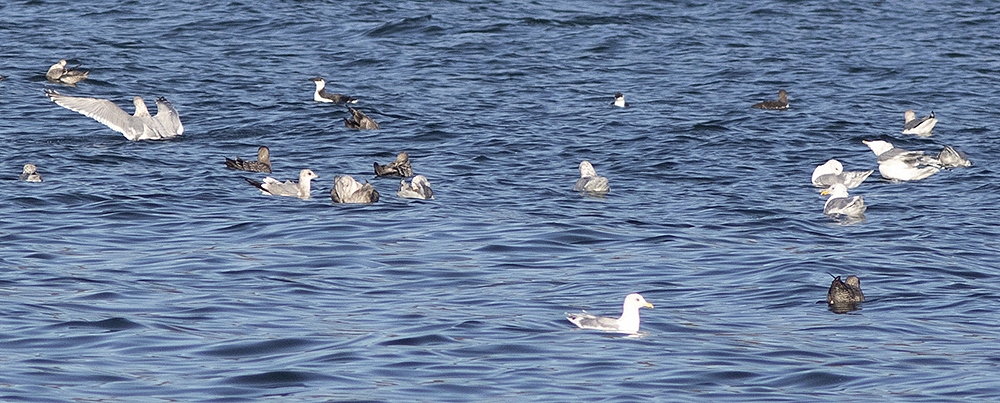
We encountered many mixed-species feeding flocks, dominated by Common Murres and several species of gulls. The murres dive down and attack schools of fish from below, driving them up to the surface where the gulls can access them.
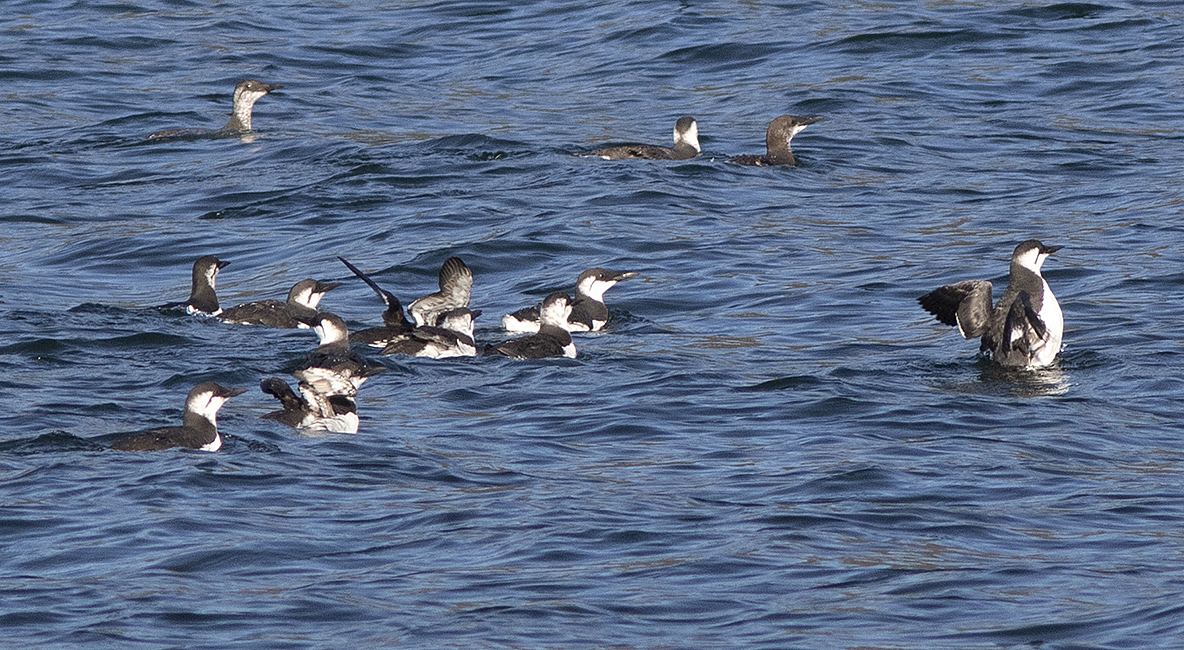
Common Murres on the water. Notice the stubby wings – they use these to “fly” underwater in the same manner as penguins. But murres can also fly in the air – although they have to beat their wings very rapidly and use a lot of energy to do so.
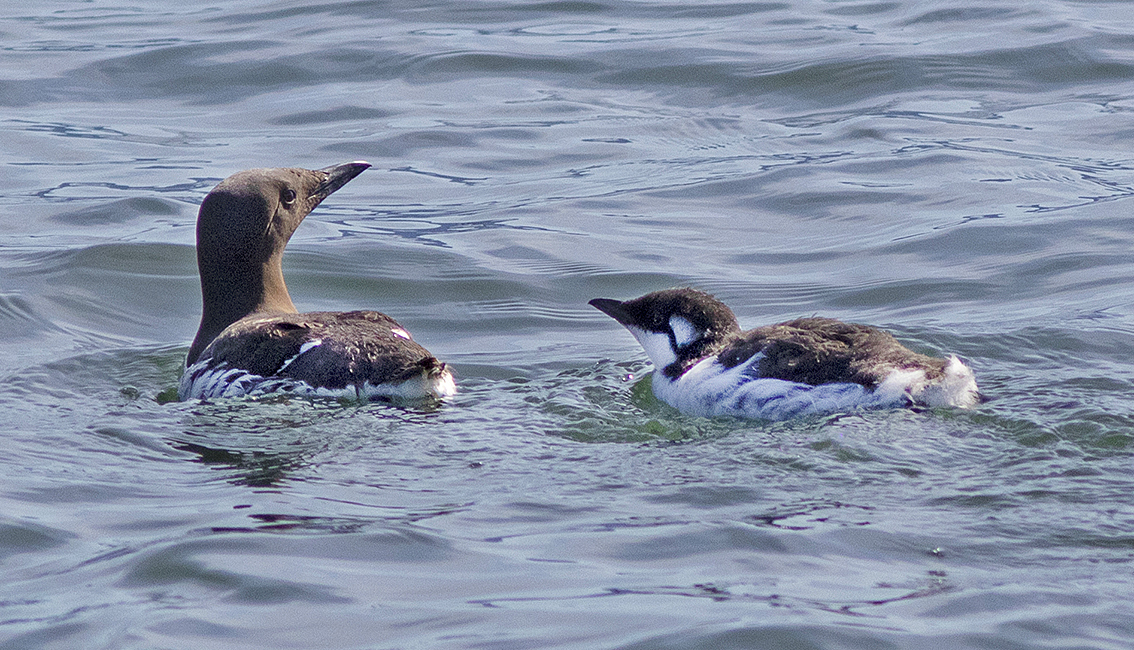
A Common Murre with a chick. Murre chicks leave their cliff nesting sites when one-third grown and just 3 weeks old. They go to sea with their father, who provides them with fish until they are able to catch their own. This pair had swum many kilometres from their breeding colony.
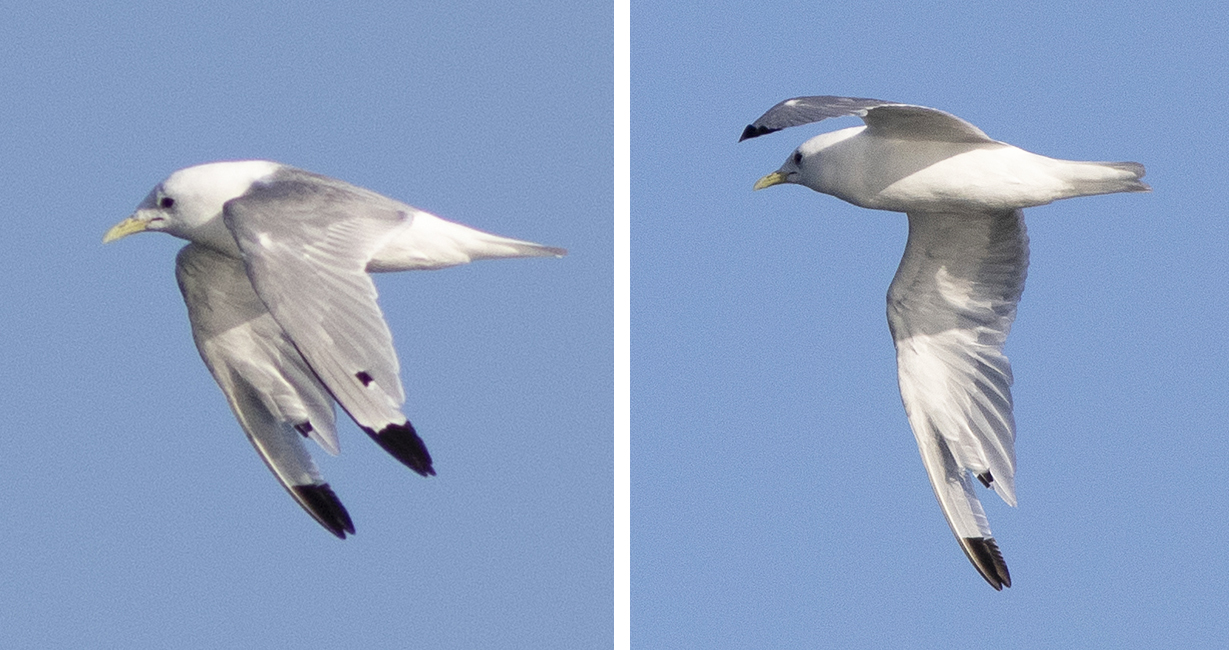
Adult Black-legged Kittiwake. Notice the gaps in its wings as it moults and grows new flight feathers.
The Canadian Customs agency made us divert into Prince Rupert to clear customs, which added 4 hours to our day’s travel. We ended the day tucked into Kxgeal Cove in Grenville Channel.
The next day, 21 September, provided continuing good weather as we made our way down the long narrow channels of the BC Inside Passage – Grenville, Royal, Finlayson and eventually into Milbanke Sound and as the sun set, passed Ivory Island into Seaforth Channel. Through all these channels we had magnificent mountain scenery and lots of wildlife.
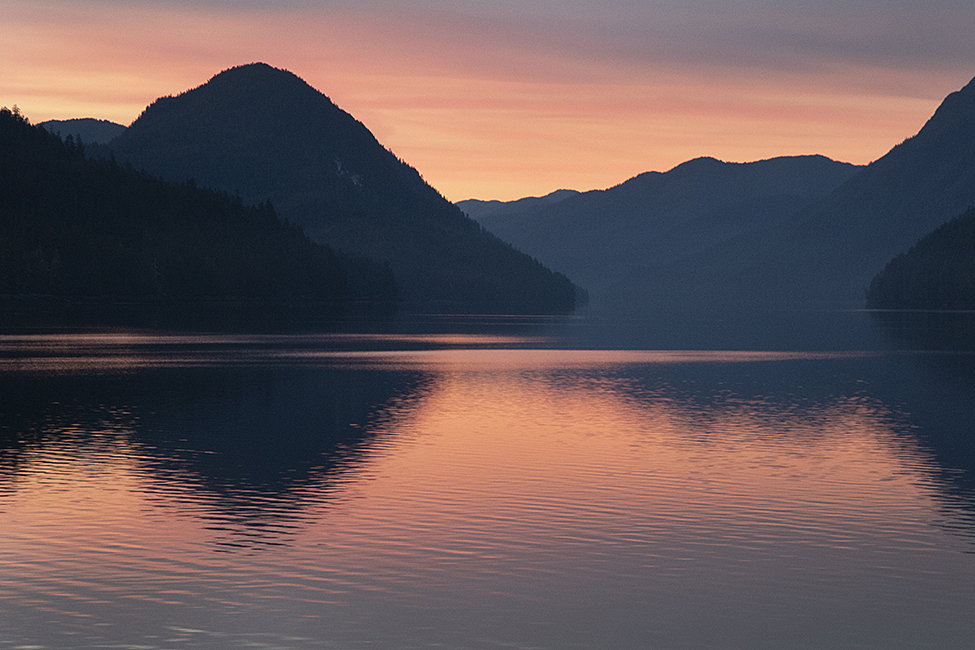
Sunrise in Grenville Channel – 21 September 2022.
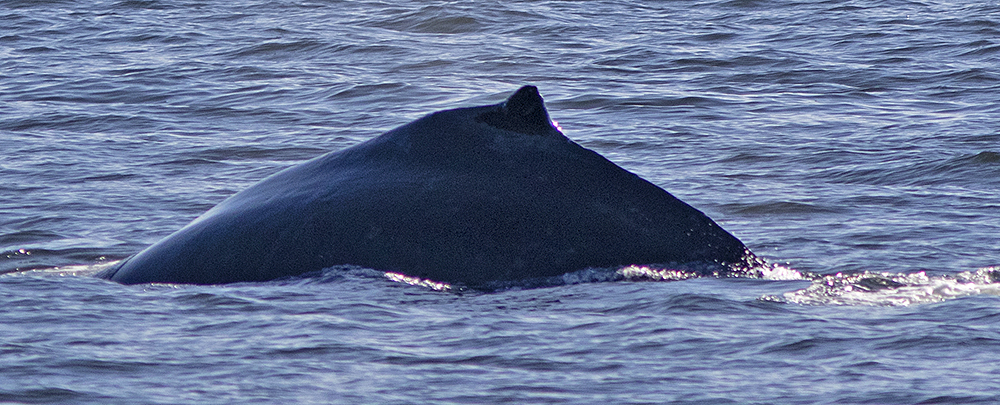
One of the dozens of Humpback Whales that we encountered along the Inside Passage.
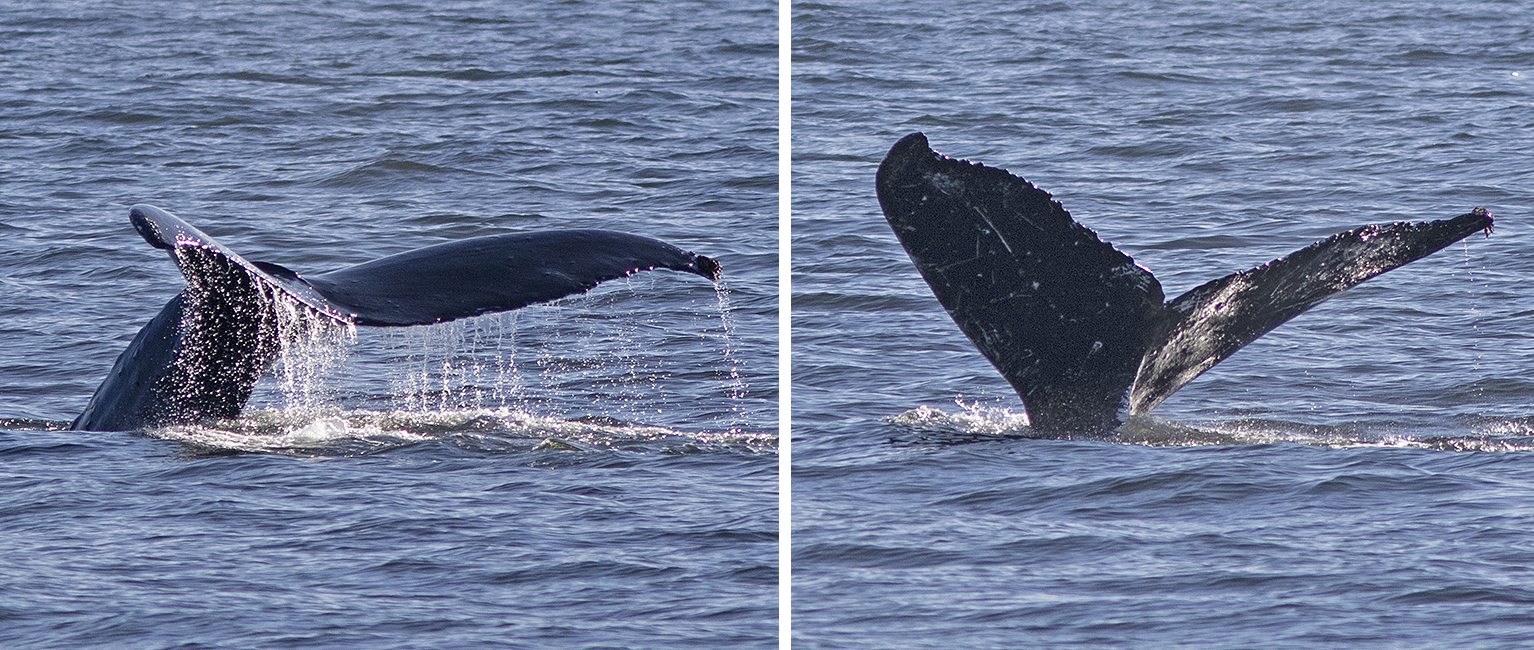
Humpback Whale
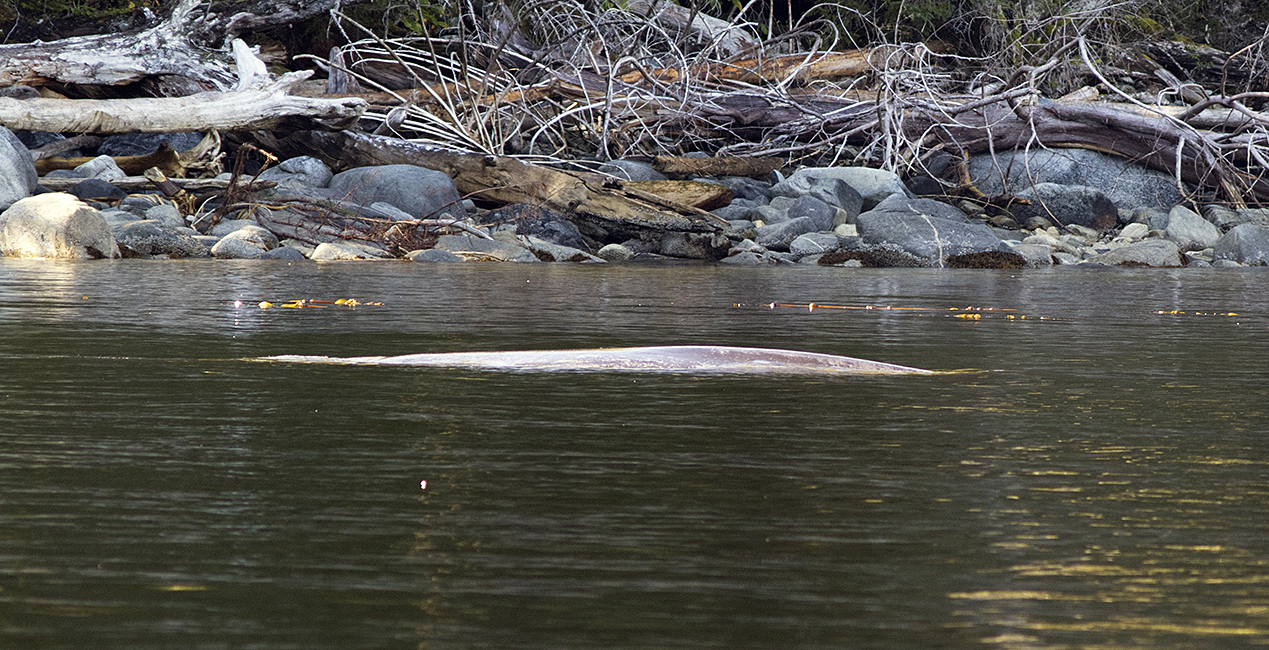
We were surprised to see this Grey Whale in Royal Channel. They are most often found on the open coast. This one appeared to be sleeping – it didn’t move as we cruised by, except to blow every minute or so.
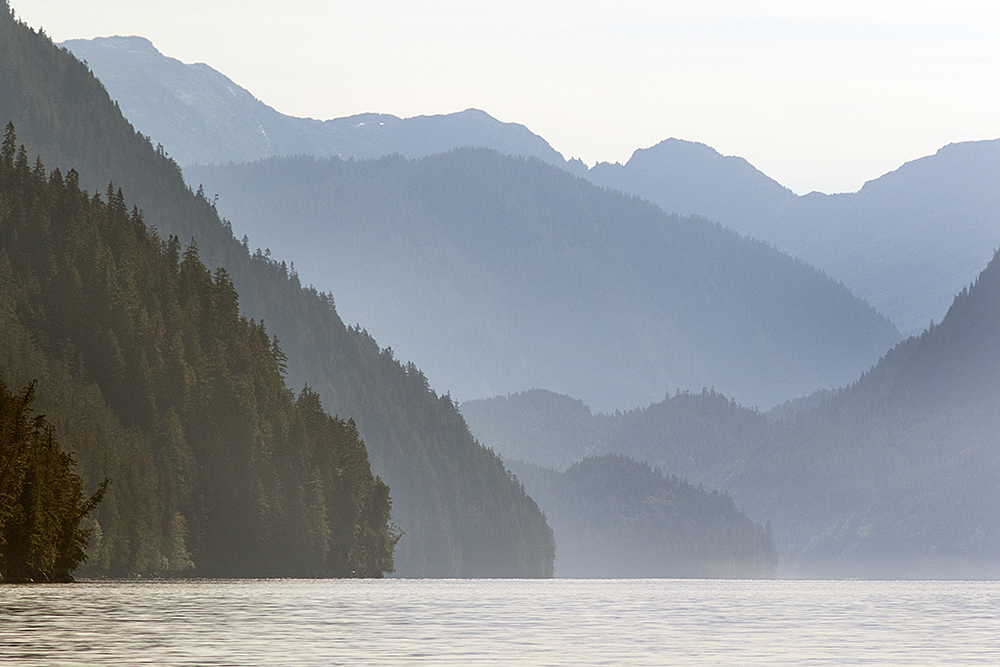
A typical scene as we traveled southward through the narrow channels of the Inside Passage.
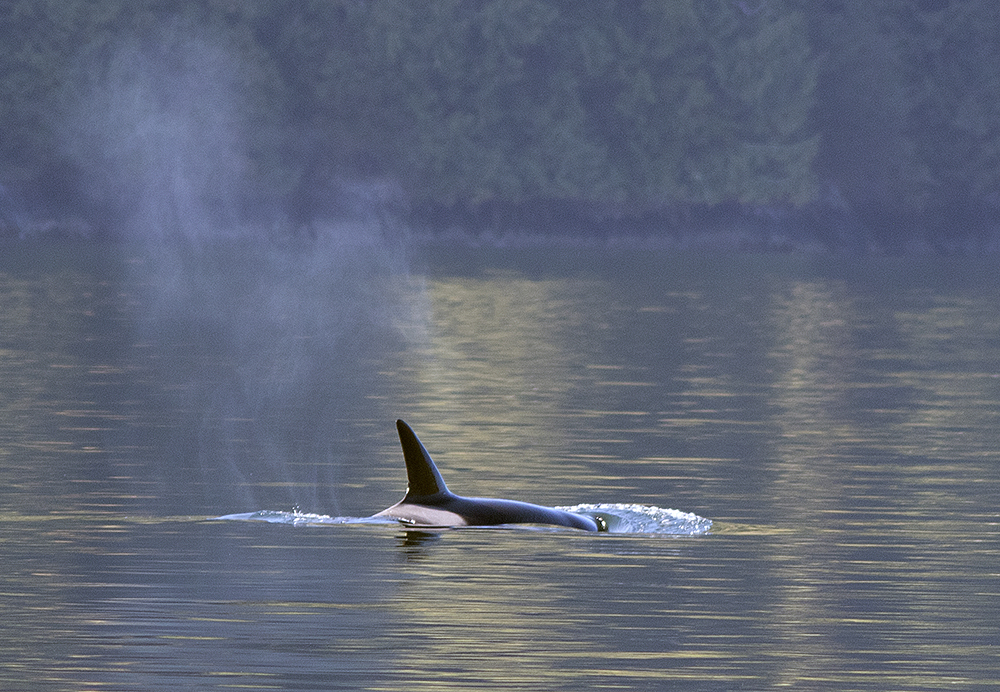
One of a pod of Orcas (Killer Whales) that we passed.
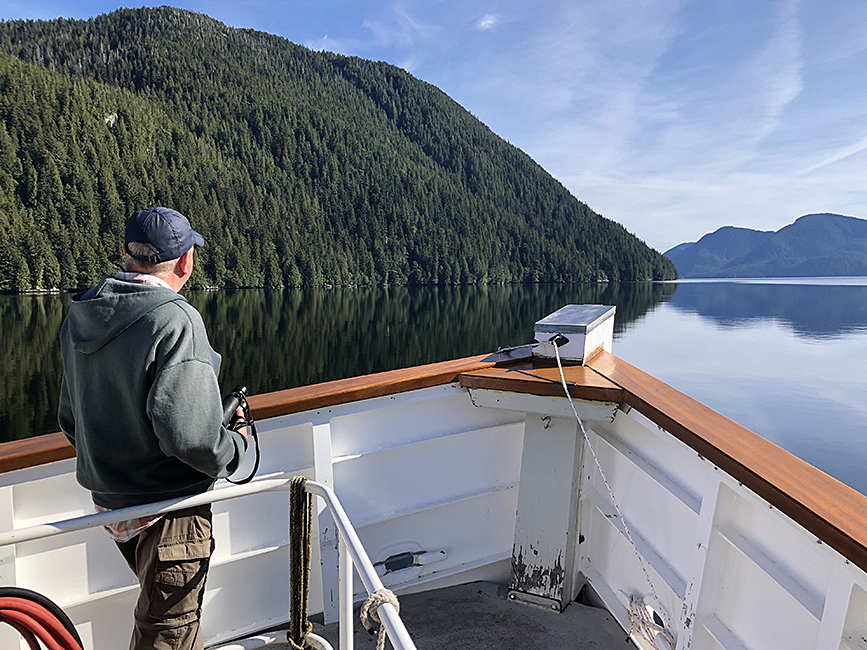
Tim on the bow in wonderful calm conditions.
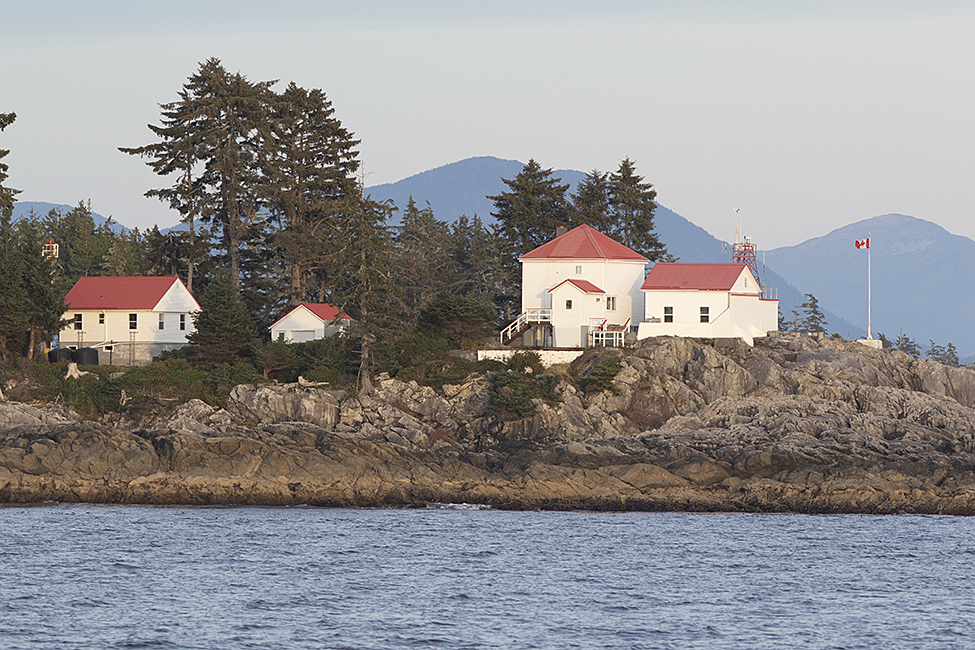
Ivory Island lightstation at the south end of Milbanke Sound.
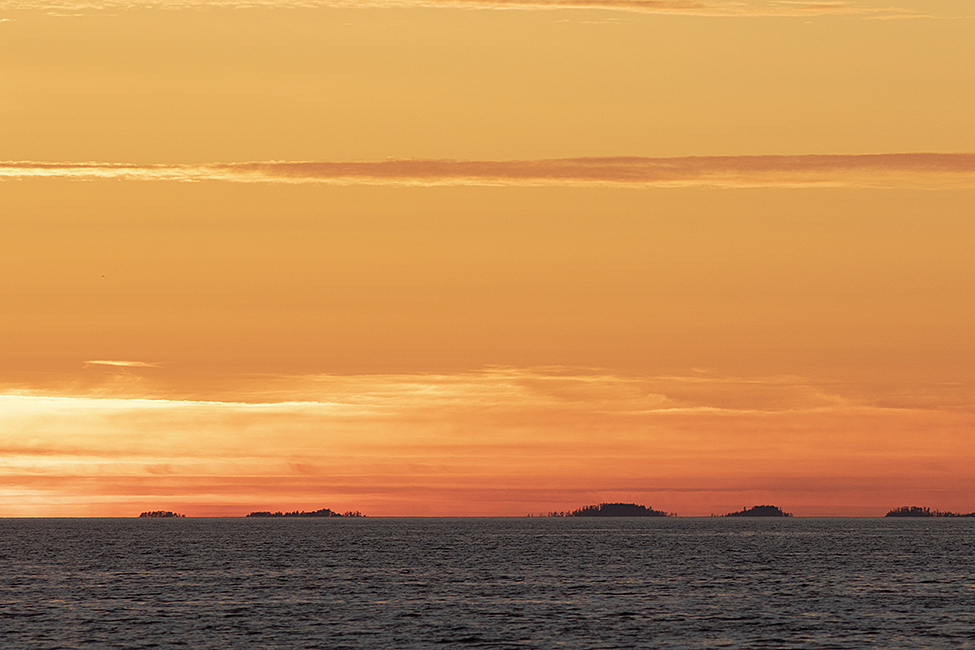
Sunset on Milbanke Sound as we entered Seaforth Channel, 21 September 2022.
We spent the night at anchor opposite the small settlement of Shearwater, near Bella Bella. The next day the good weather continued as we traveled through more narrow channels – Lama Passage, Fisher Channel and the wider Fitzhugh Sound. The open ocean of Queen Charlotte Sound is often a concern to mariners in these waters, but we crossed this section over several hours in lovely calm conditions with loads of interesting wildlife.
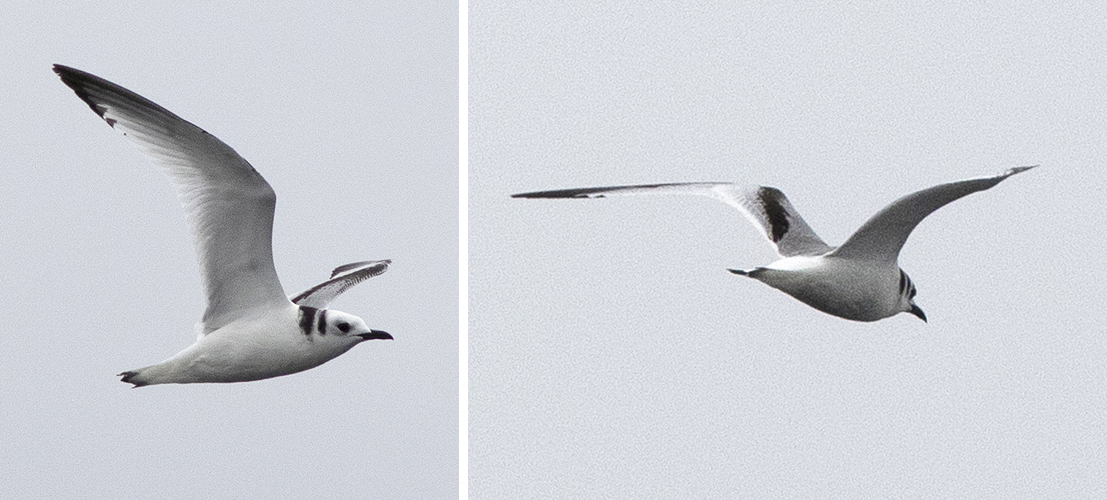
A juvenile Black-legged Kittiwake. One seldom sees these oceanic gulls in the sheltered waters around Vancouver and Victoria, but they were quite common in Queen Charlotte Sound and the northern end of Q Charlotte Strait at the northern end of Vancouver Island.
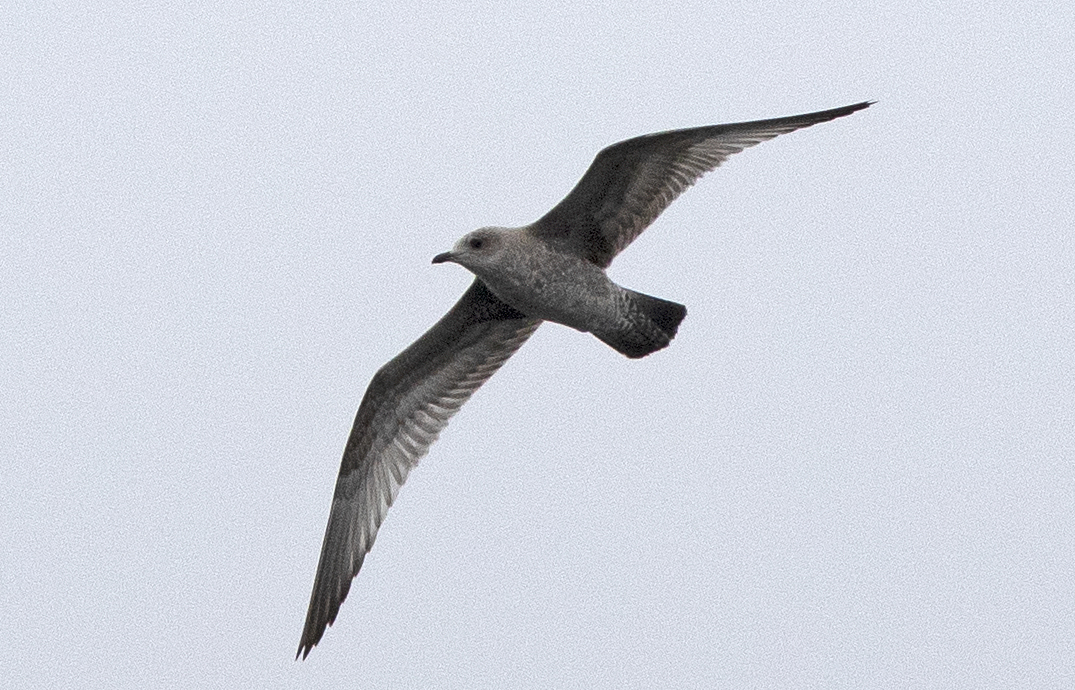
A juvenile Short-billed Gull (until recently known as Mew Gulls). This species was one of the most common gulls throughout our voyage.
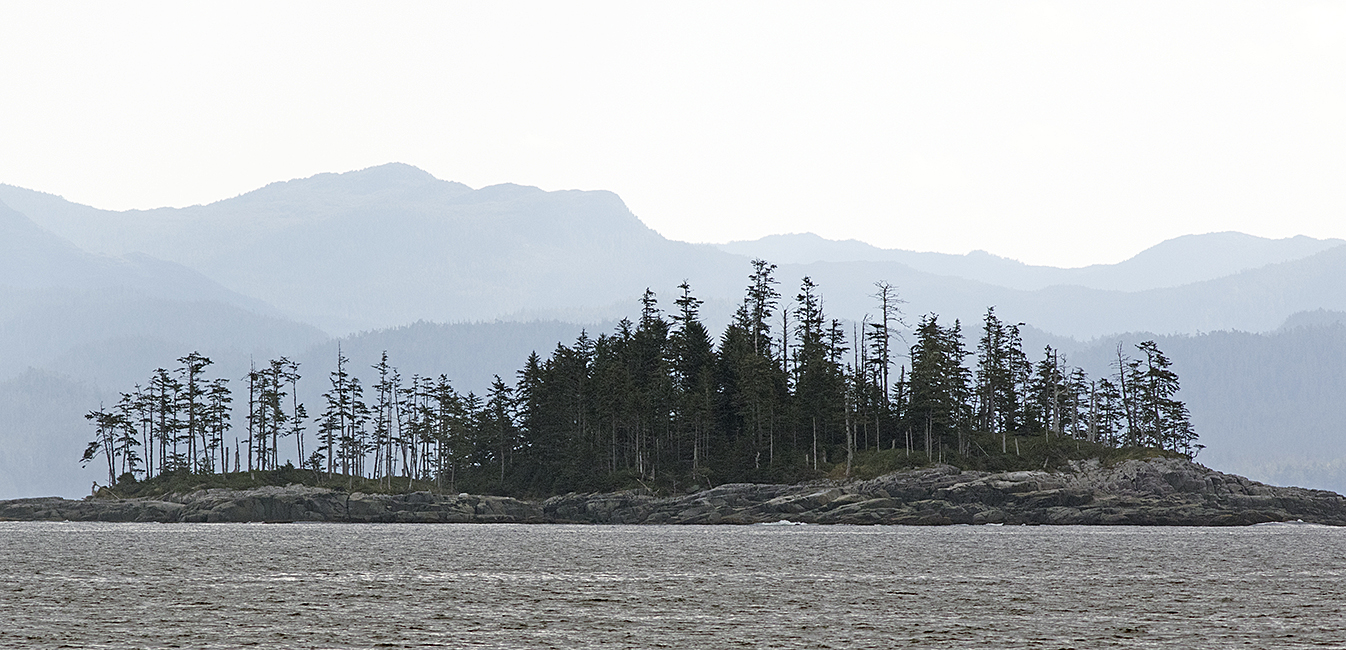
We passed numerous scenic islands with mountainous backdrops.
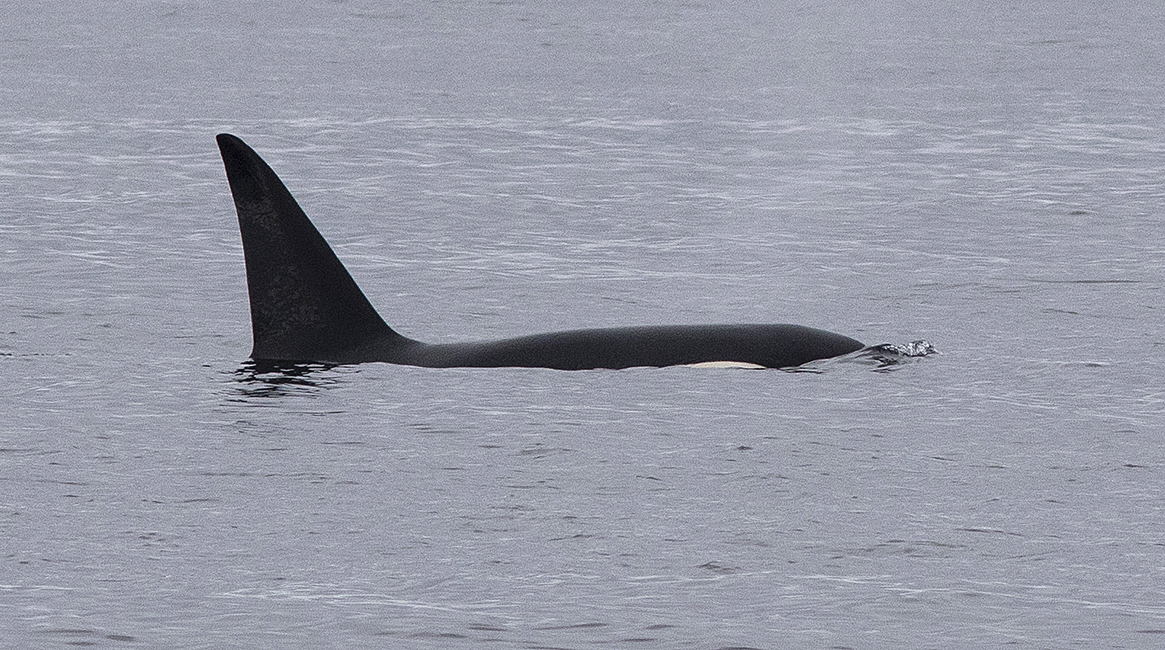
A big male Orca in Queen Charlotte Sound.
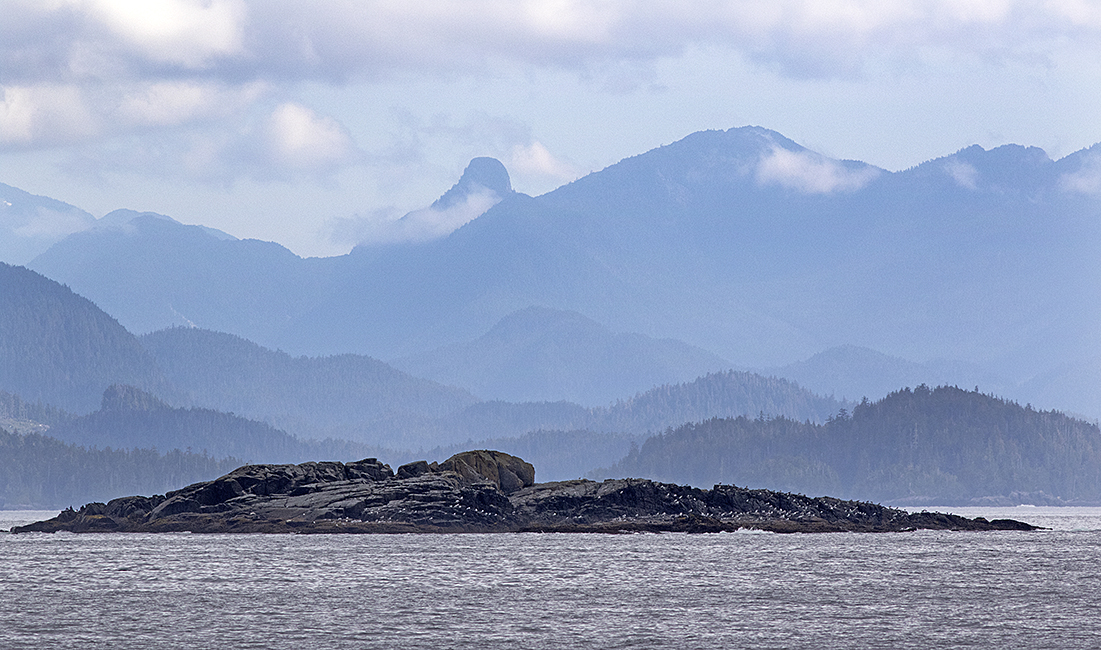
Another scenic island with dozens of roosting gulls, and interesting mountain vistas. Queen Charlotte Sound, 22 September 2022.
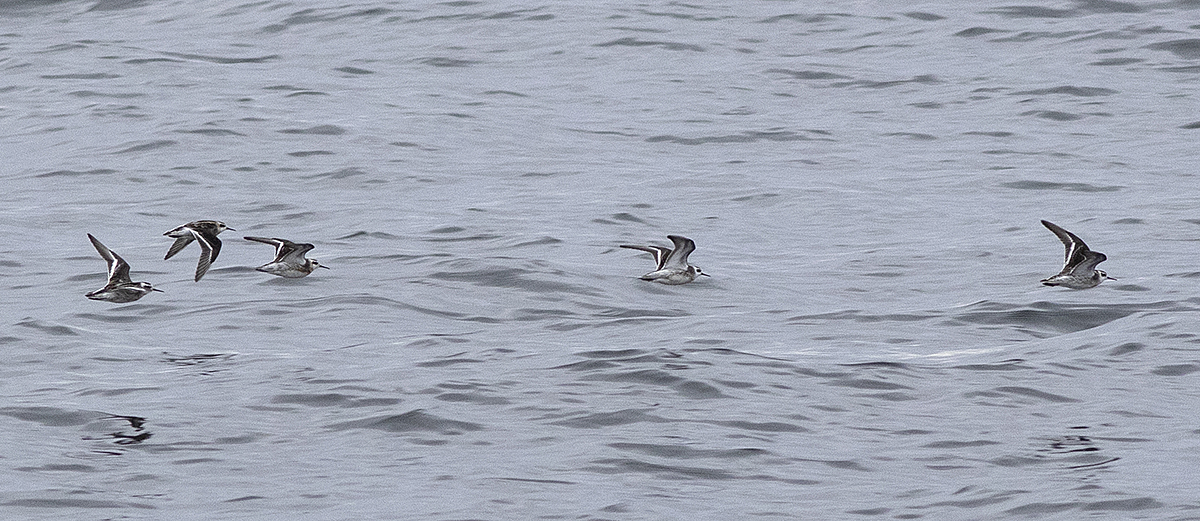
A small flock of Red-necked Phalaropes. These shorebirds breed in tundra habitat but become seabirds for most of the year, typically picking up tiny food items along tide rips and slicks.
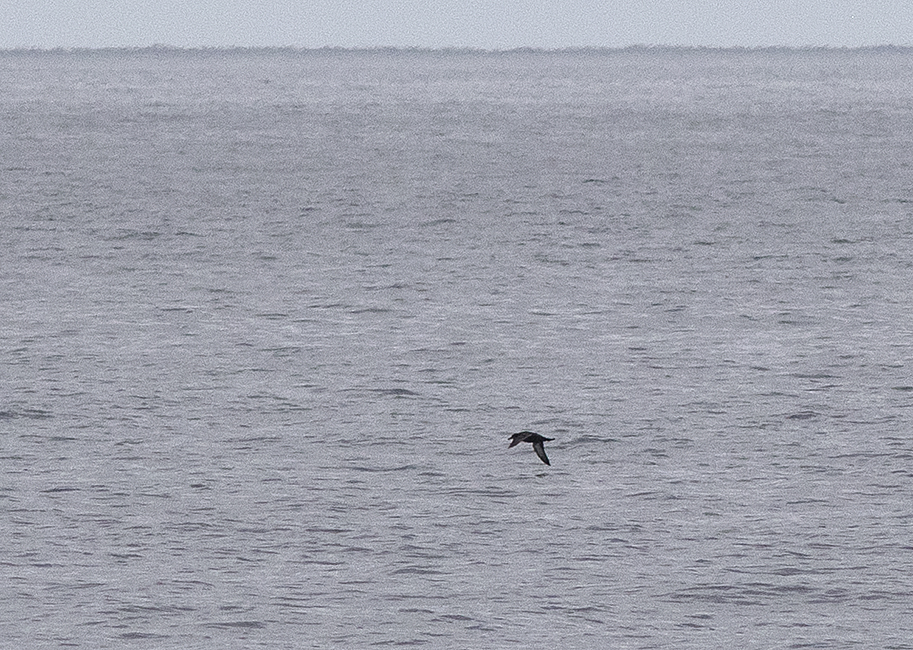
We saw a few dozen shearwaters, but mostly at a great distance so separating Sooty and Short-tailed was sometimes impossible. This I figured was a Sooty Shearwater, with a bulkier body and a paler underwing.
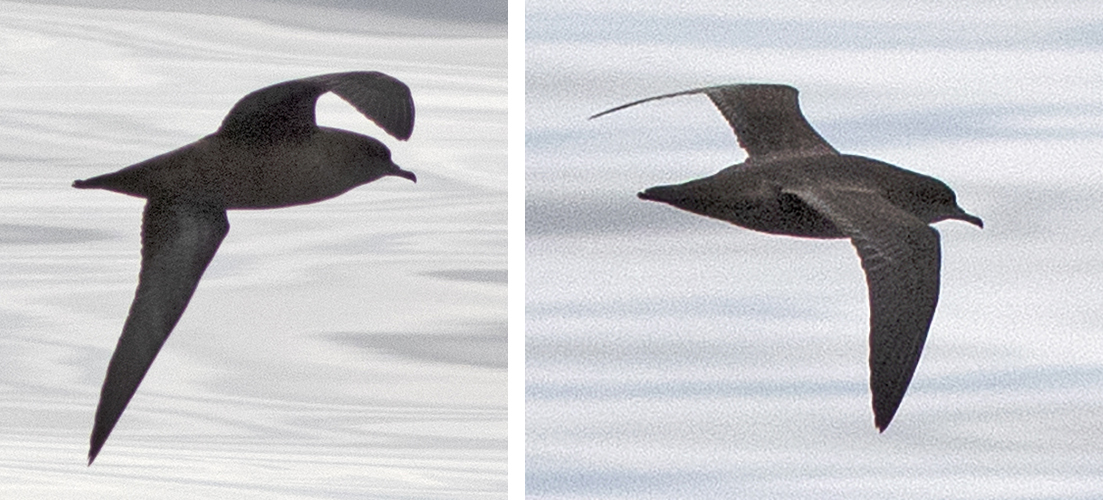
This bird passed close enough for half-decent photos and I was fairly confident in recording this as a Short-tailed Shearwater. These birds breed in Tasmania but migrate up to the most northern reaches of the Pacific during their non-breeding season (northern summer).
As we entered Queen Charlotte Strait at the northern tip of Vancouver Island we were obviously in very productive marine habitats. Everywhere we looked there were flocks of feeding birds and many Harbour Seals and Steller’s Sealions.
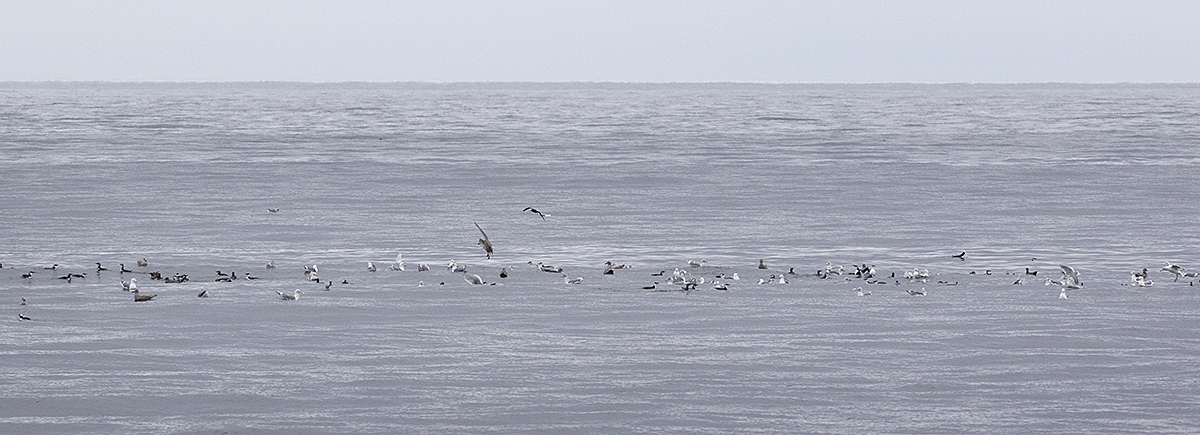
One of the many mixed-species feeding flocks we passed in Queen Charlotte Strait.
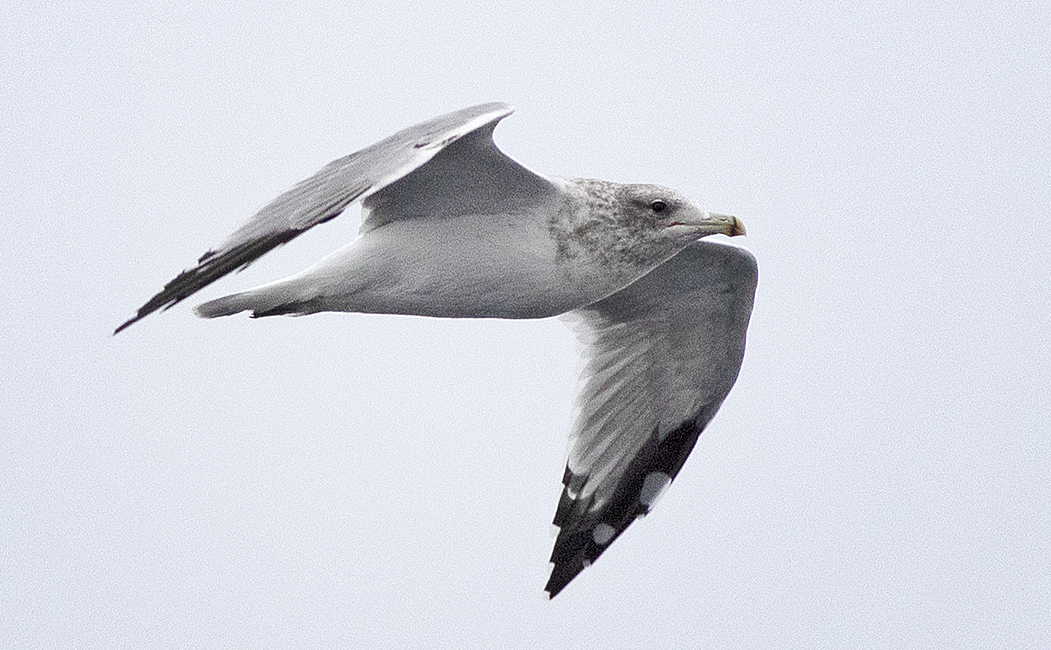
Identifying large gulls at this time of year is a challenge. With black wingtips and dark eyes this is likely a third-year Thayer’s (Iceland) Gull, a regular fall and winter visitor from the Arctic.
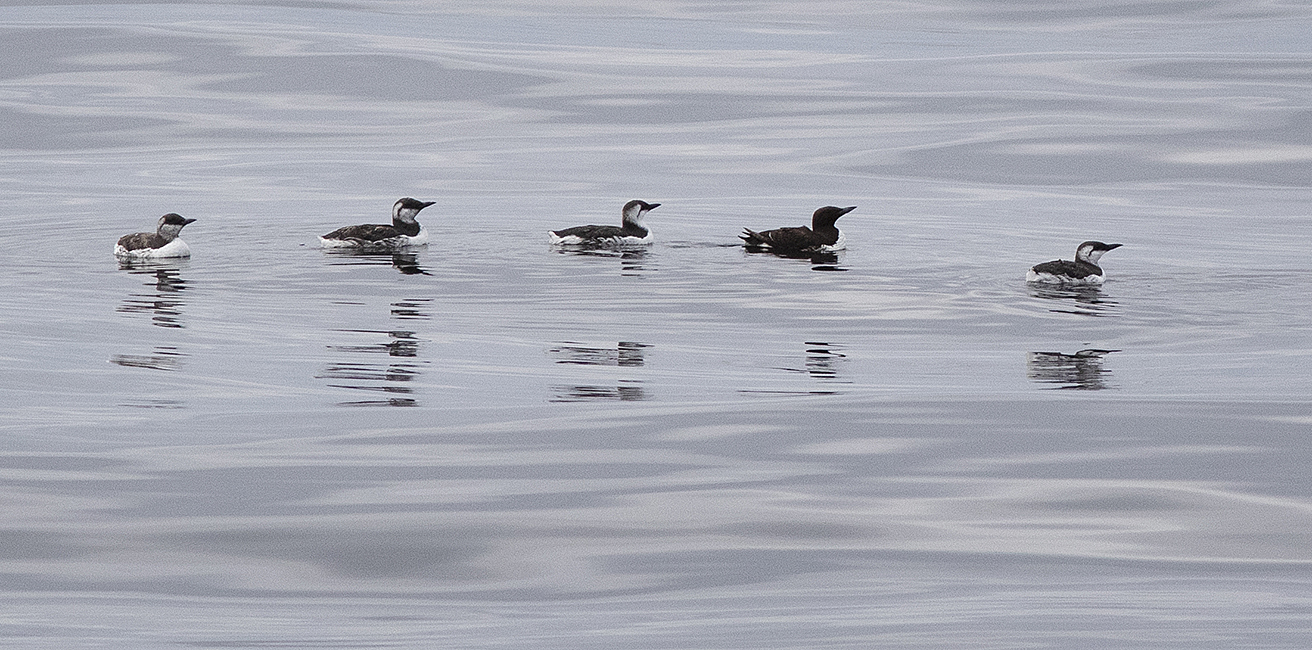
A line of Common Murres. The bird with the black face is still in its breeding plumage, the others are moulting into basic winter plumage.
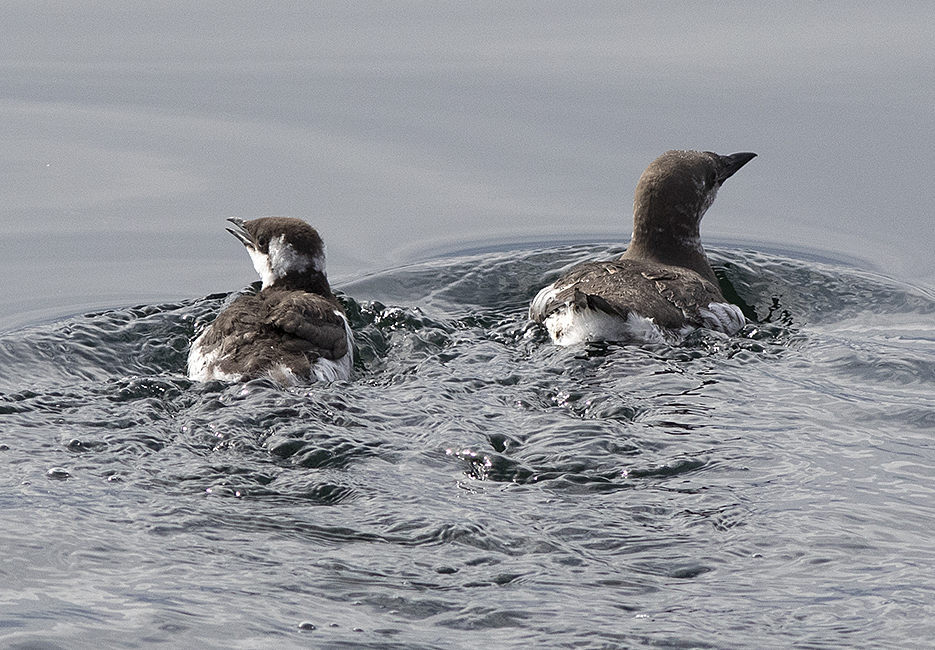
Common Murres – another half-grown fledgling accompanied by its father.
Proximity to the open ocean and the productive habitat allowed us to see several seabirds that one normally doesn’t see in the sheltered waters of British Columbia, like the shearwaters, Cassin’s Auklets and storm petrels.
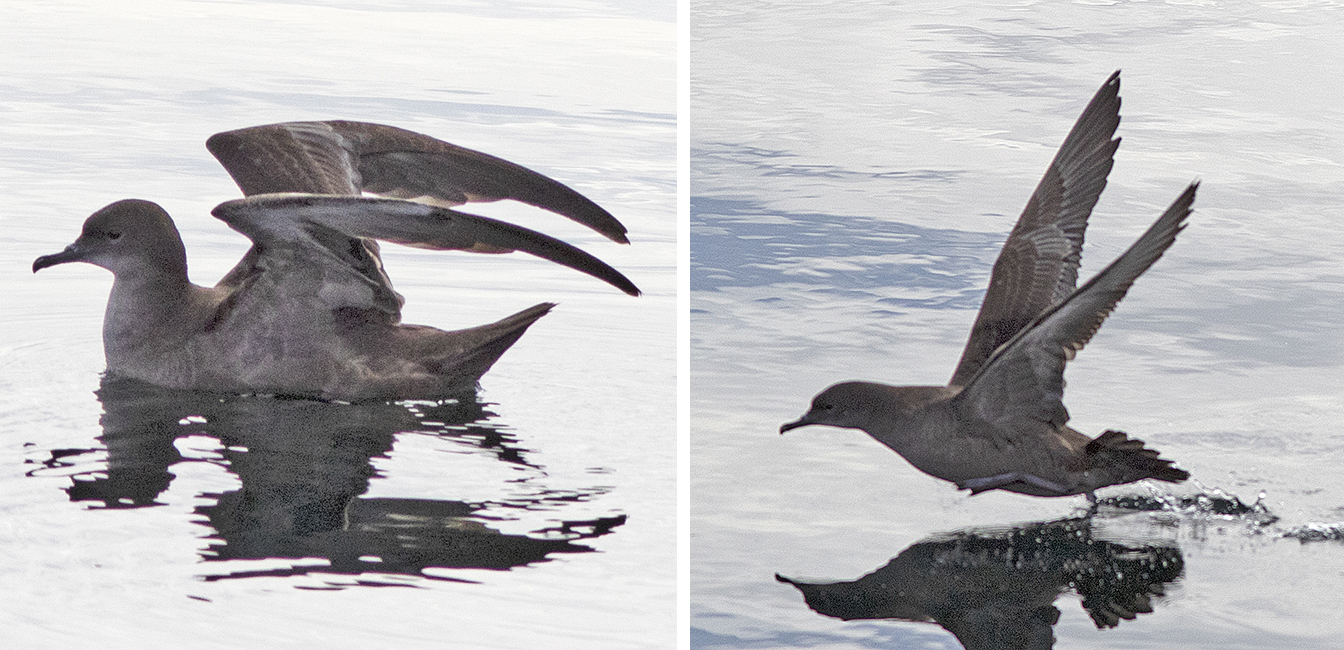
Short-tailed Shearwater – Queen Charlotte Strait.
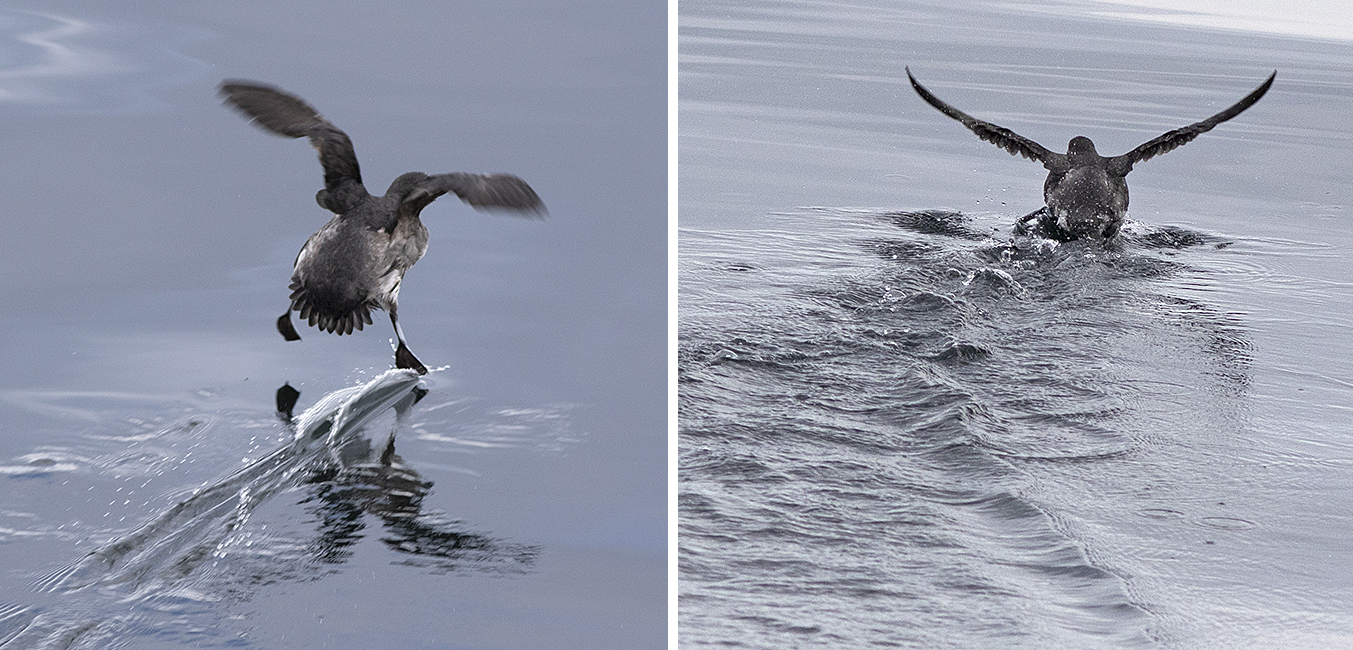
Cassin’s Auklets attempting to take off. These stubby-winged divers have trouble getting airborne. In this case, as the ship approached they gave up trying to fly and dived underwater to avoid us.
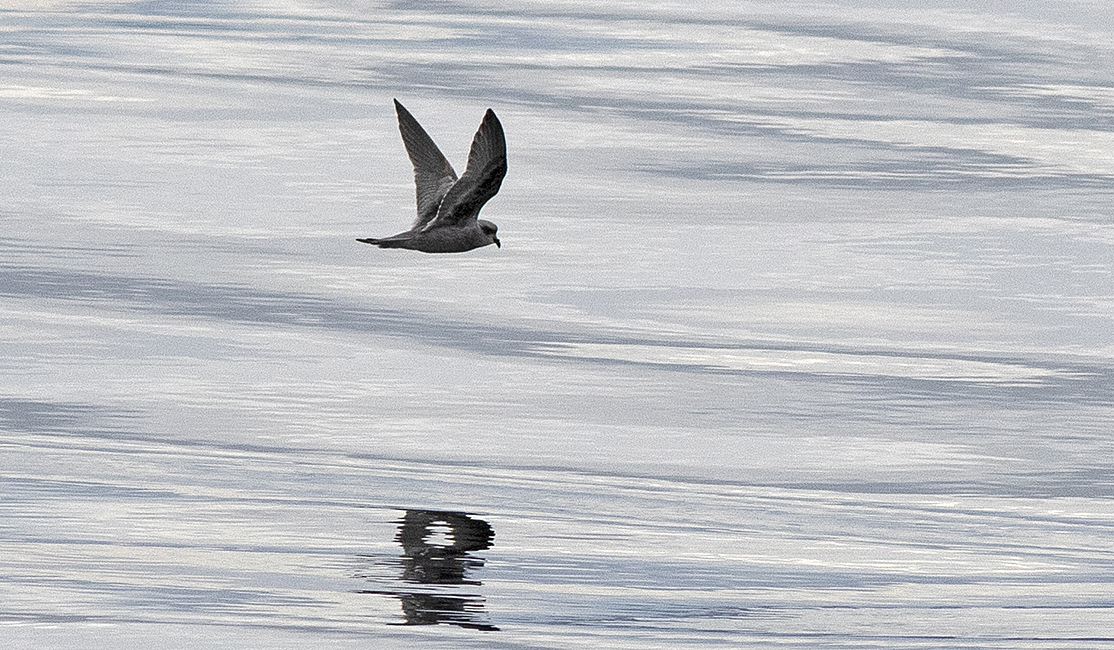
What a delight to see a few Fork-tailed Storm Petrels. They normally feed out in the open ocean but the nearby Storm Islands are an important breeding colony at the north end of Queen Charlotte Strait.
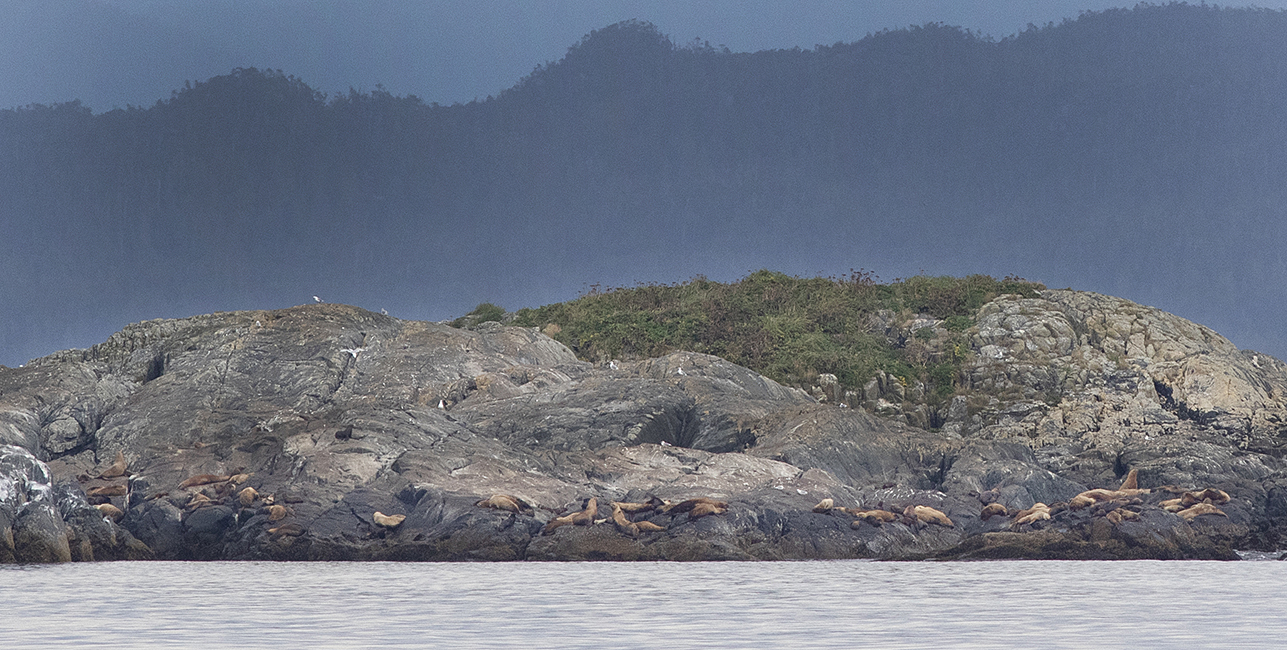
Dozens of Steller’s Sealions hauled out on an island – Queen Charlotte Strait.
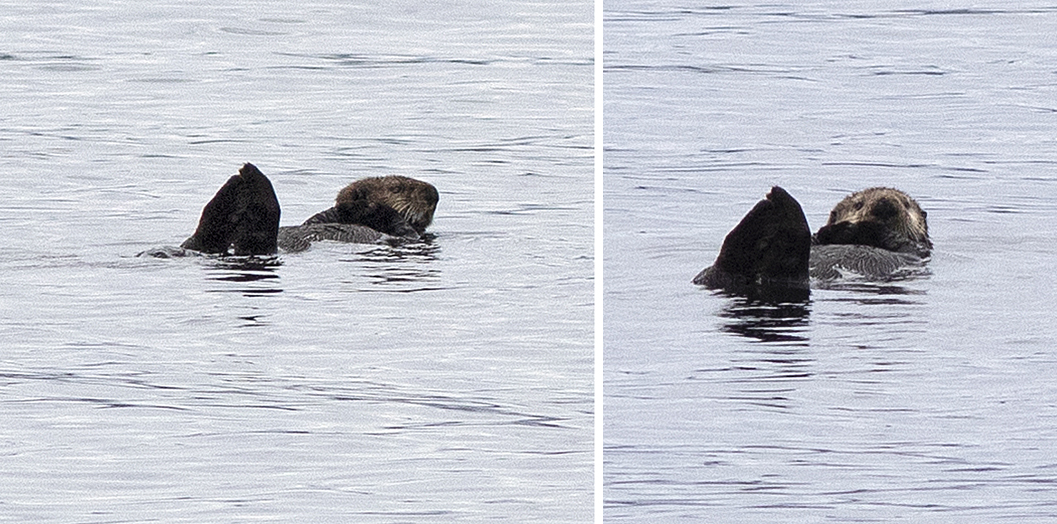
Sea Otters are slowly making a come-back in B.C. waters. We saw about 10 in Queen Charlotte Sound and Q. C. Strait.
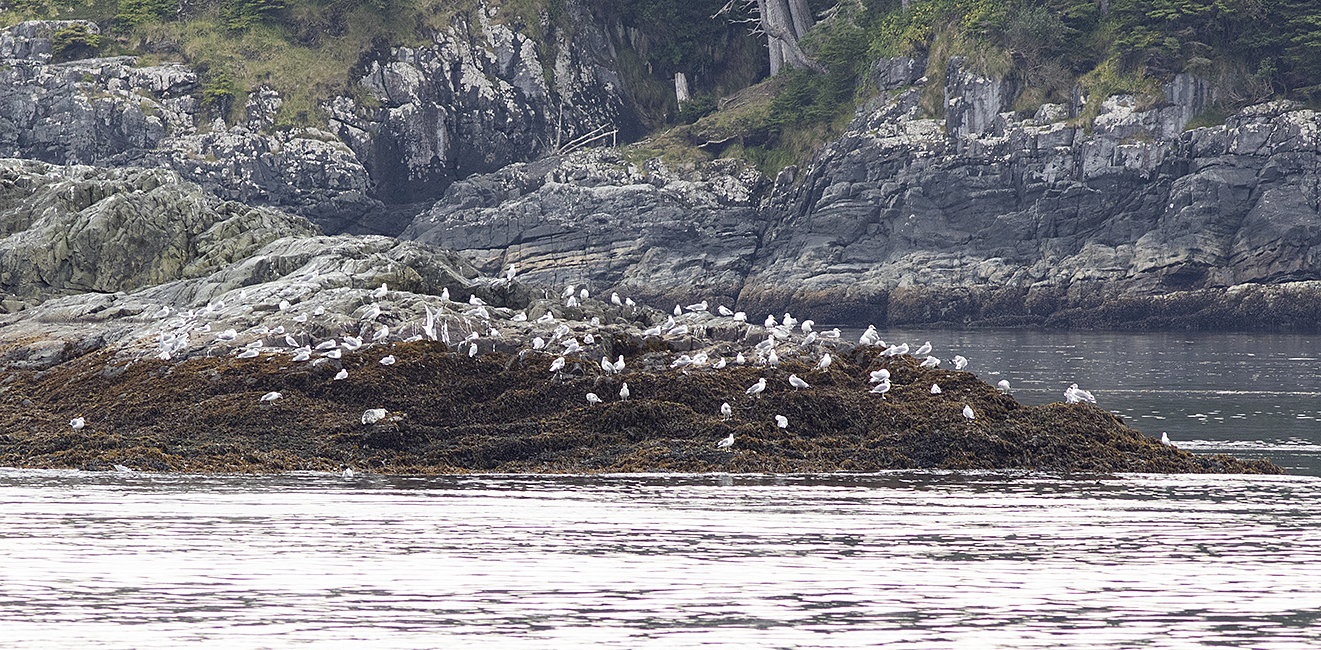
Gulls roosting – Queen Charlotte Strait.
We spent the night anchored next to Port McNeil. The next day, September 23rd was cool and misty as we made our way down the long Johnstone Strait and Discovery Passage.
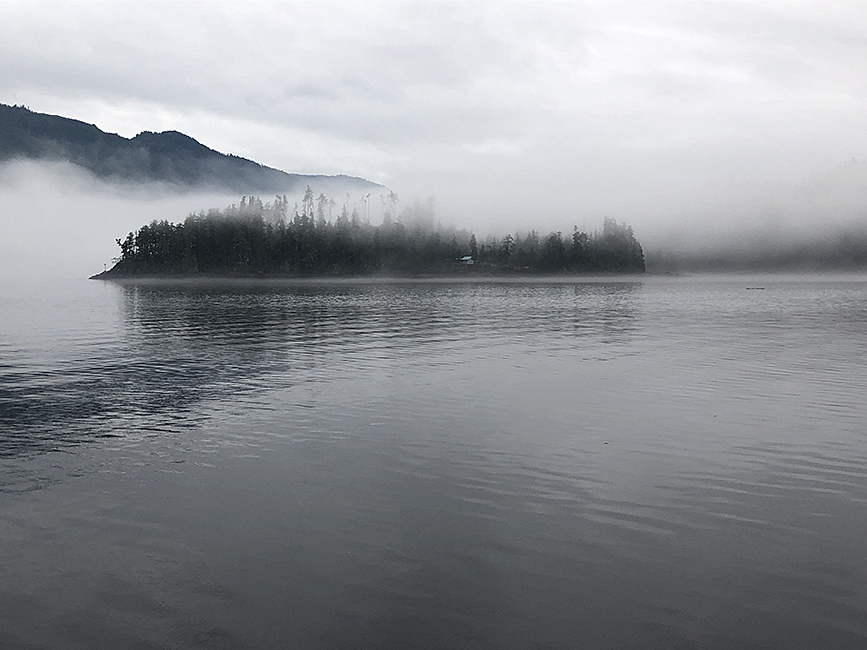
September 23rd was the only cloudy, misty, sometimes drizzly day we had on the whole trip. But some interesting scenery with the low clouds and fog. A small island in Johnstone Strait.
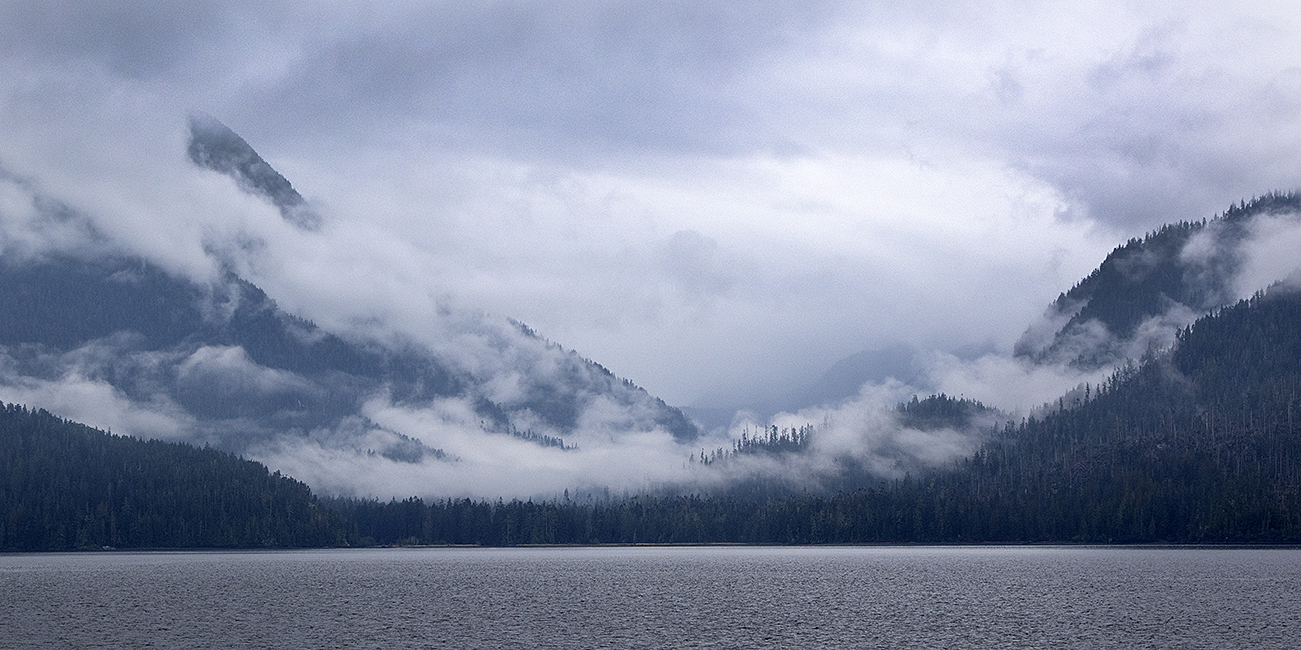
We passed by the mouth of the Tsitika Valley – one of the small areas of old-growth forest on northeastern Vancouver Island that was preserved only as a result of intensive pressure from environmental groups. This was all slated to be clearcuts.
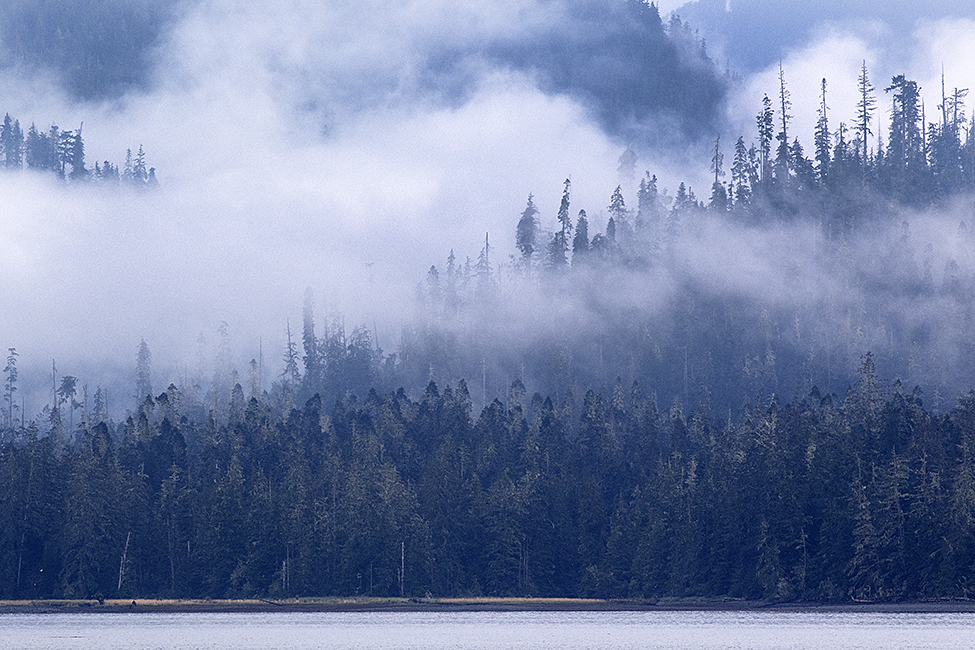
A closer view of the Tsitika Valley with its magnificent old-growth conifers. Much of Vancouver Island looked like this before industrial logging took hold.
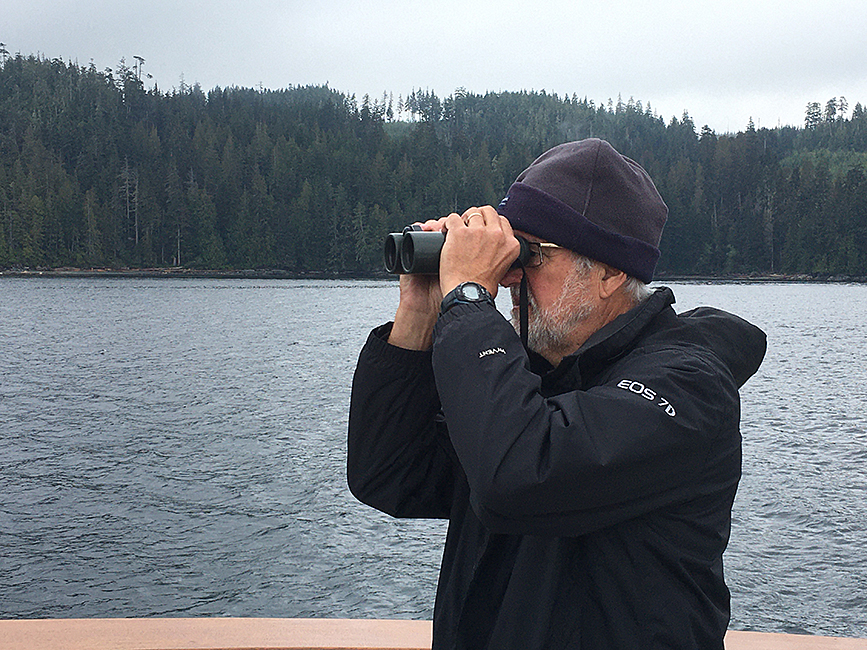
Alan on the bow on 23rd September.
Throughout our trip we encountered numerous flocks of birds migrating southward – mainly waterfowl – ducks and geese.
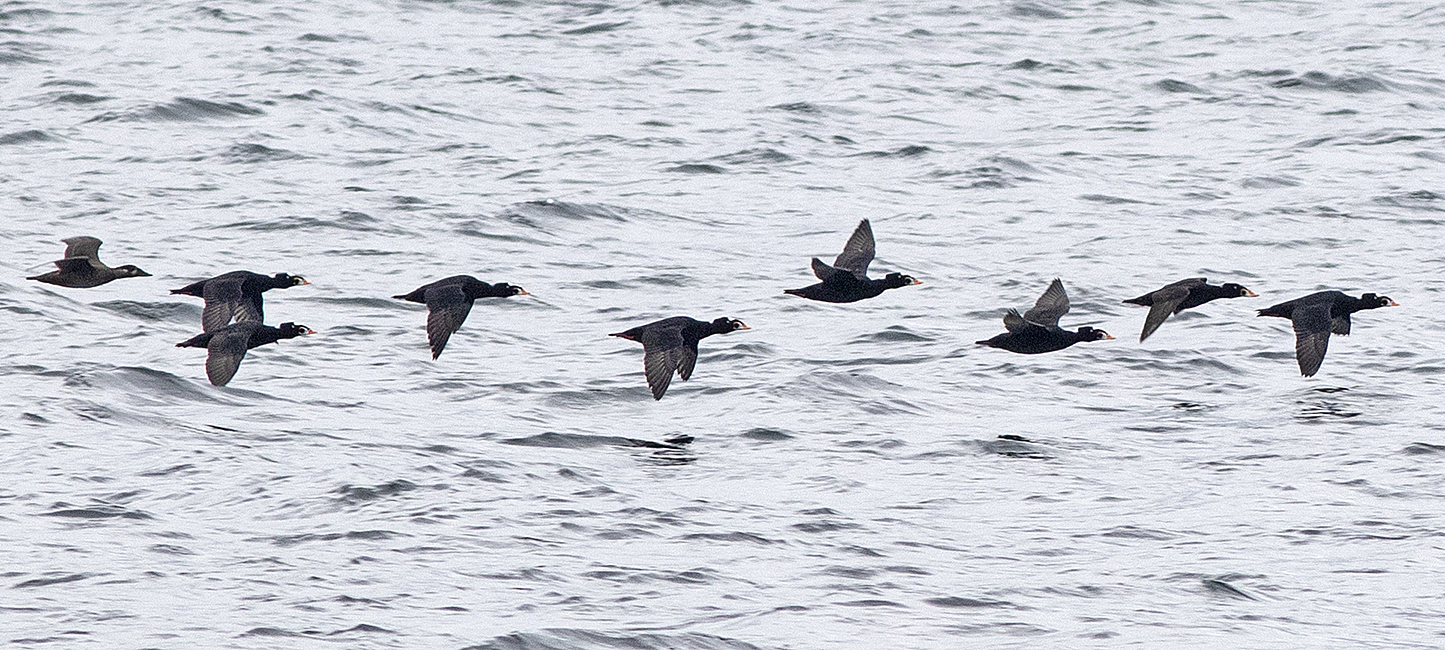
Surf Scoters heading south.
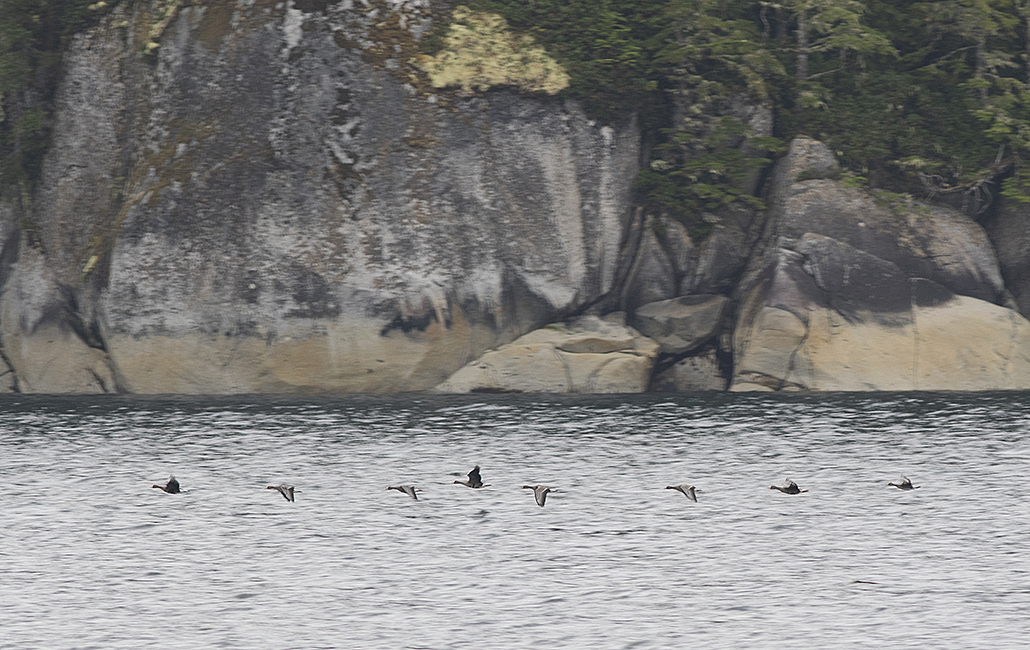
Greater White-fronted Geese are not a common sight in British Columbia. This flock was heading south along with many other waterfowl.
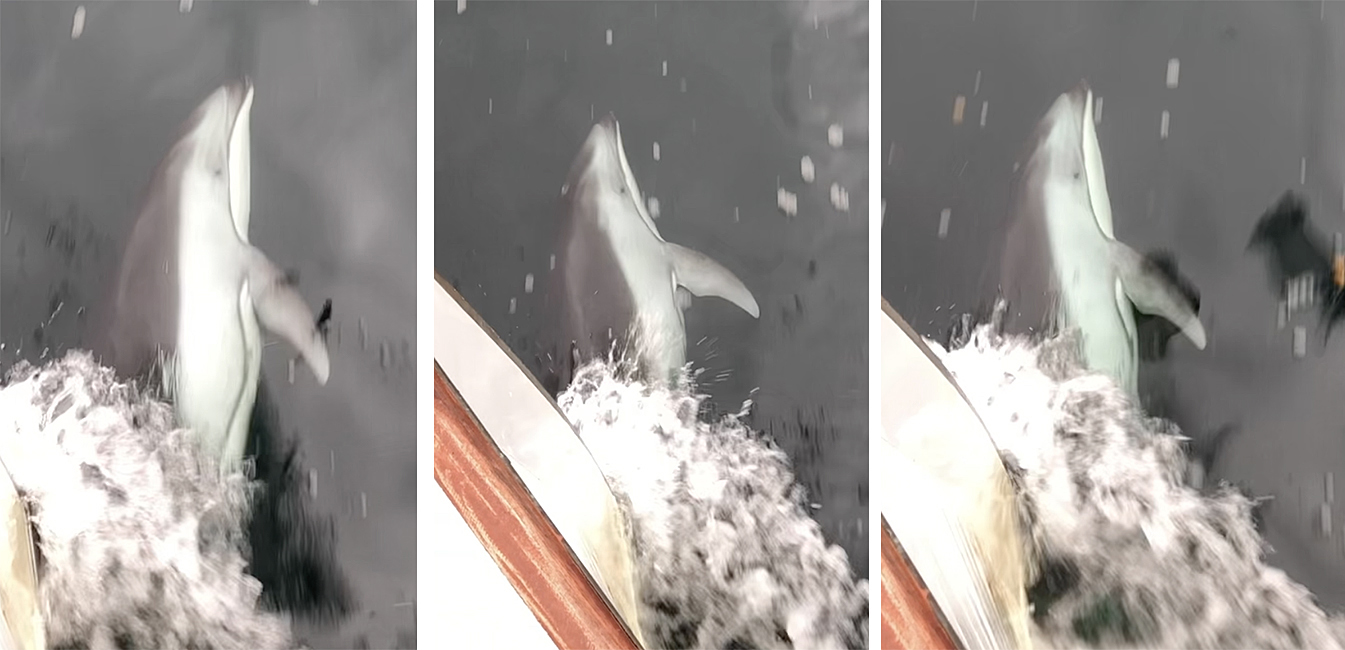
Pacific White-sided Dolphin bow-riding, Discovery Passage near Seymour Narrows. These were extracts from a video.
At the end of the day we anchored near Comox. We expected a continuation of the unsettled weather but instead September 24th turned out to be calm and sunny – perfect weather for transiting the open water of the Strait of Georgia.
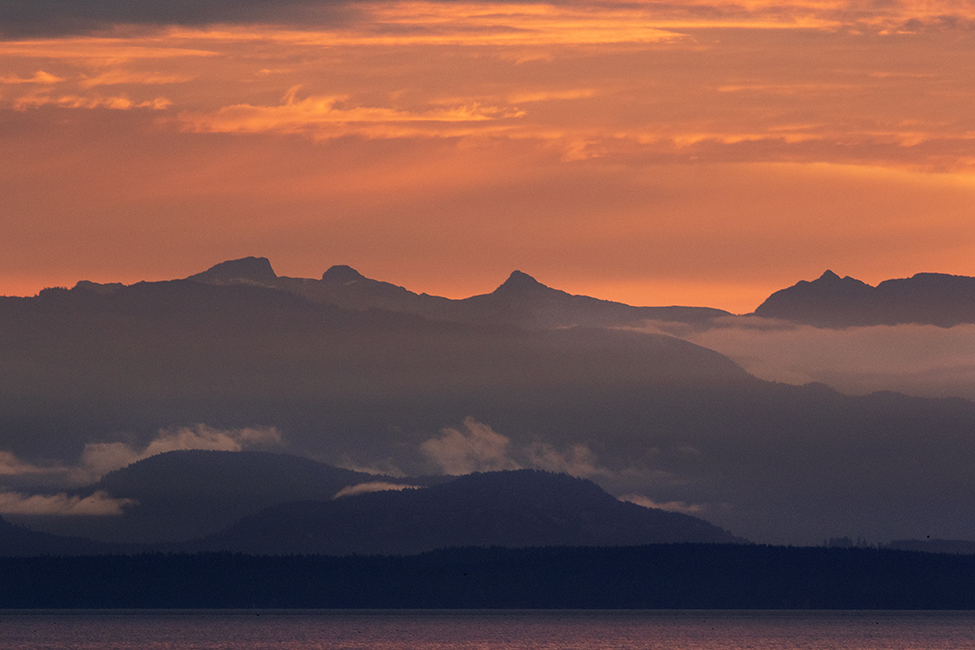
Sunrise near Comox, 24th September 2022.
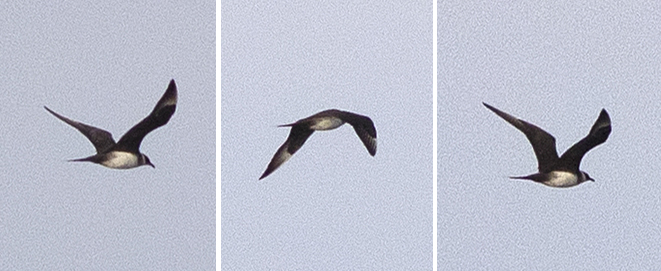
A Parasitic Jaeger (Arctic Skua) – a rare bird in the Strait of Georgia. These jaegers often steal food from smaller gulls, by harassing them in flight until they regurgitate their meal.
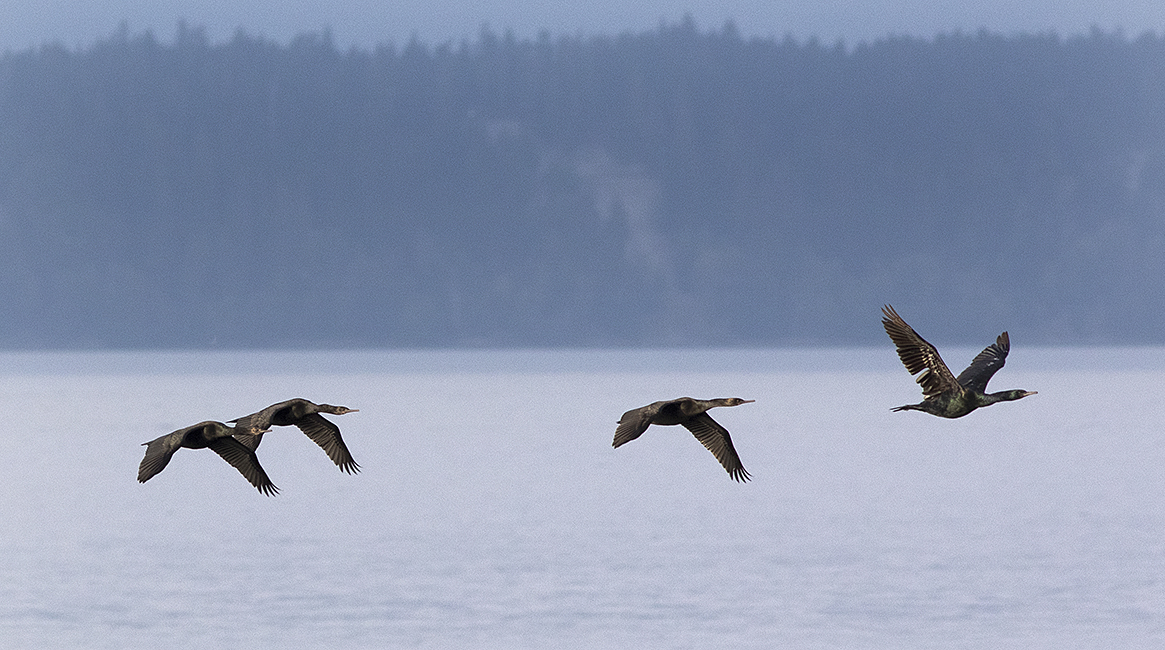
Pelagic Cormorants heading to foraging grounds.
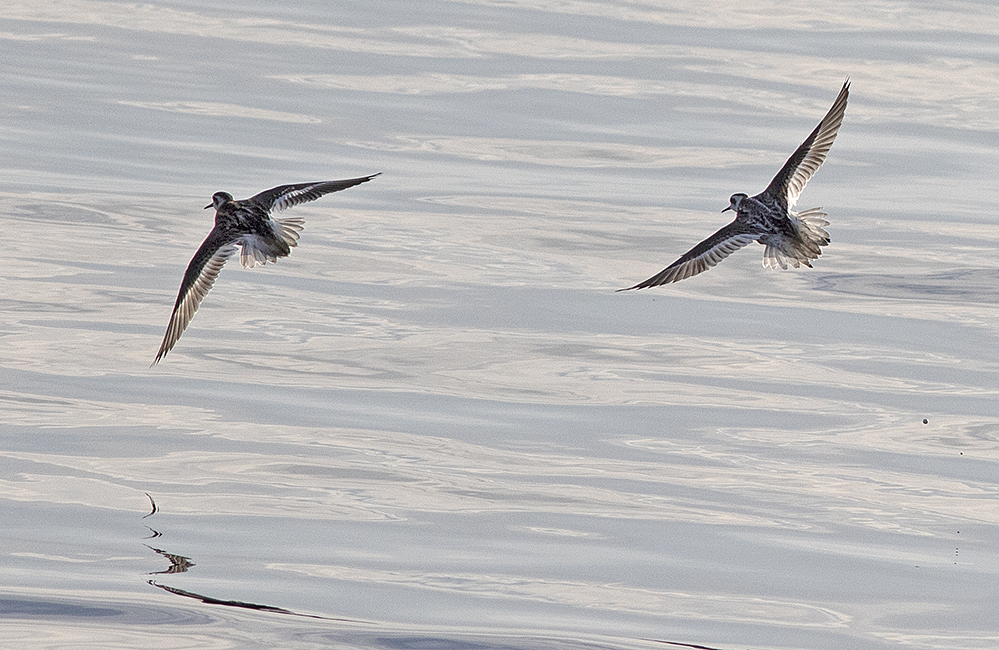
We encountered more Red-necked Phalaropes in the Strait of Georgia.
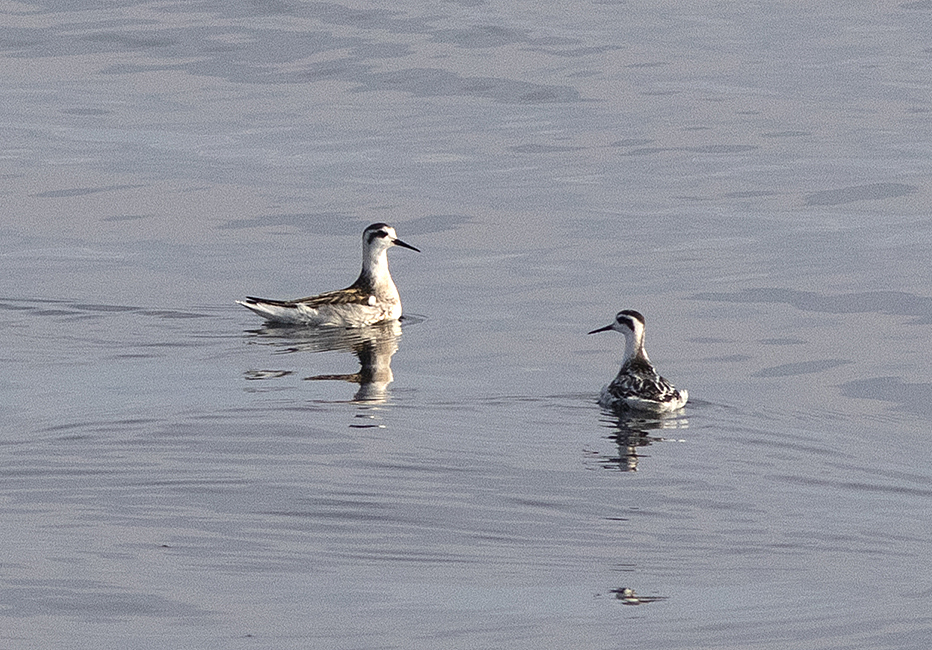
Red-necked Phalaropes on the water.
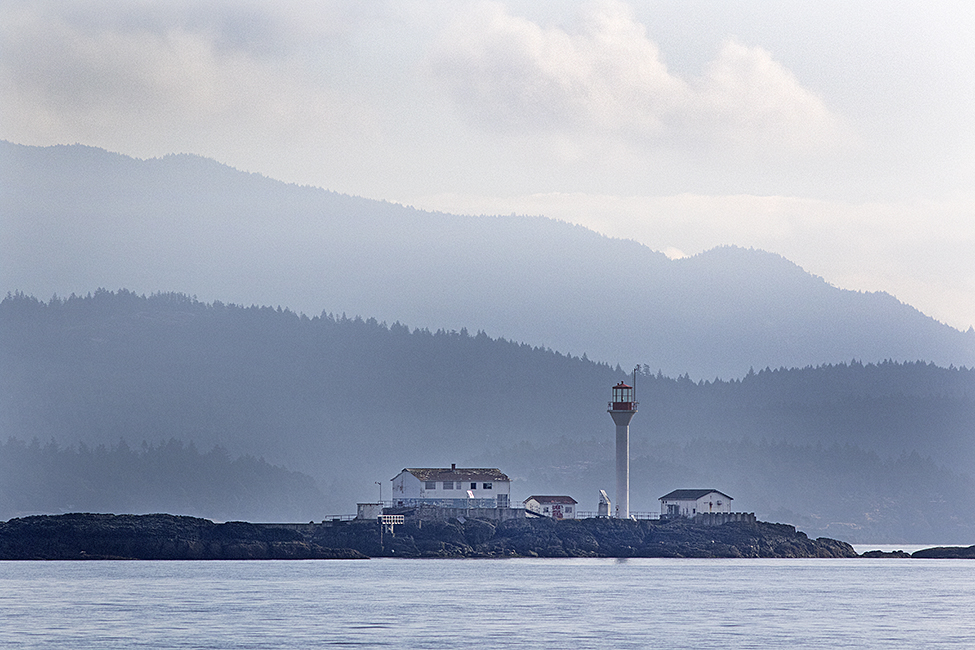
The lightstation on Jenkins Island next to the larger Lasqueti Island with the mainland beyond.
South of Lasqueti Island I was in familiar waters that I regularly cross by ferry to Nanaimo or Victoria. We had a beautiful warm, calm day, lounging in our t-shirts on the ship’s bow and enjoying regular sightings of Humpback Whales and occasional Harbour Porpoises.
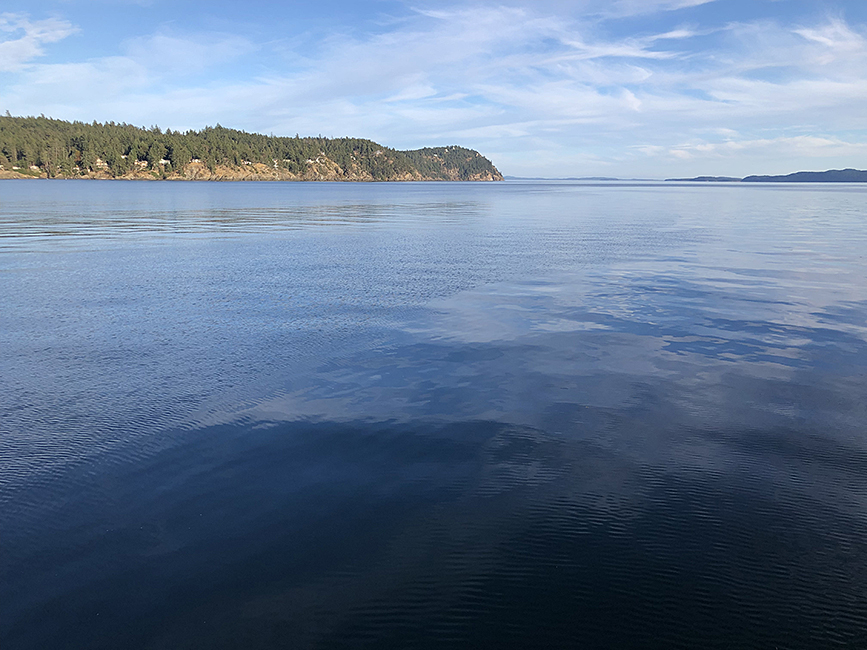
Flat calm sea next to South Pender Island as we neared the end of the British Columbia portion of our travels. The islands on the right in this photo are some of the San Juan Islands in Washington.
Our final night in British Columbia was at anchor in Bedwell Harbour, South Pender Island.
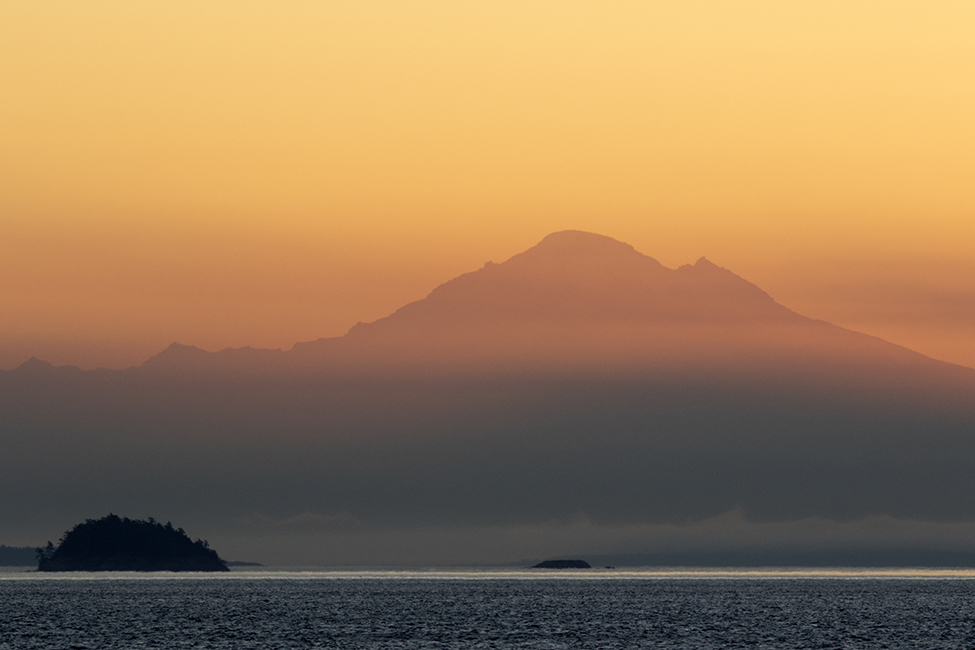
Mount Baker in the sunrise glow, 25 September 2022. This dormant volcano, just south of the BC/Washington border, is 3,288 m (10,786 ft) high. Many years ago I reached the summit with a group of friends.
Our final full day on the Sea Wolf was among the San Juan Islands, stopping for several hours at Friday Harbour to clear customs, take on water, get rid of garbage and pick up a few essentials (we’d run out of beer!).
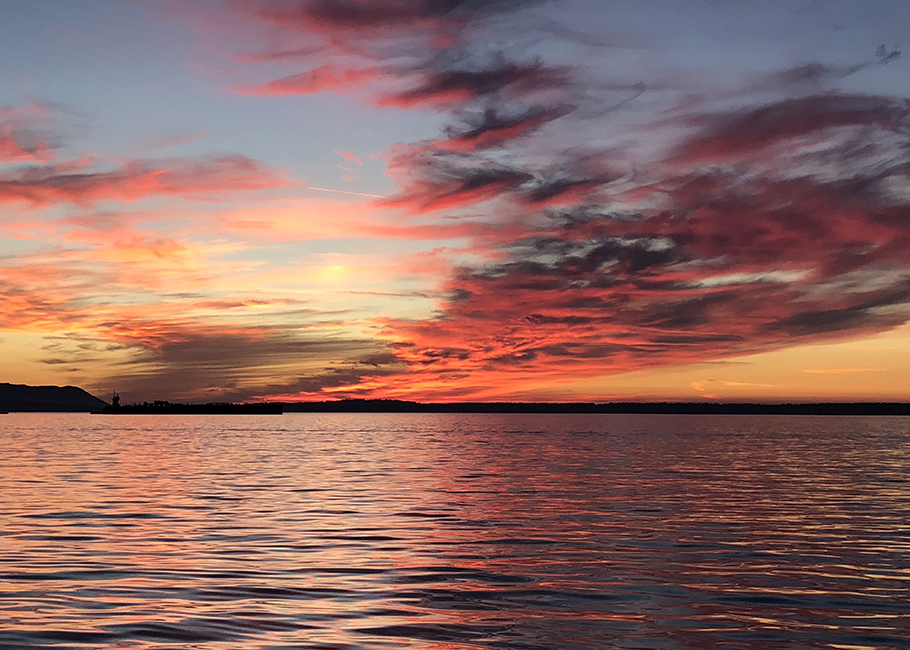
Sunset on my final evening on the Sea Wolf, at anchor off Bellingham, WA. The end of a memorable week-long voyage.
On September 26th I said farewell to my Sea Wolf friends, caught a bus to Vancouver, another bus to Merritt and was home in Logan Lake in time for supper.
~~~~~~~~~~~~~~~~~~~~~~~~~~~~~~~~~~~~~~~~~~~~~~
